Launched for the 2018 model year, the i30 N is Hyundai first high-performance vehicle for the road. Although the N division is a few years old and responsible for the company's solid rally campaign, road-going cars wearing this badge are still to come. While the i30 N already available in Europe, a similar version of the brand-new Veloster is coming to the U.S. in 2018. The i30 won't make it on this side of the pond for road use, but Hyundai wants to use the beefed-up hatchback on the race track. Meet the i30 N TCR, Hyundai's weapon of choice for the Pirelli World Challenge.
Showcased for the first time at the 2018 Chicago Auto Show, the i30 N TCR was launched alongside Hyundai's new partnership with Bryan Herta Autosport. The result of this collaboration is a factory-sponsored race team that uses two versions of Hyundai’s i30 N TCR race cars currently available to customers in Europe. Bryan Herta will also develop all aspects of the team, including technicians, drivers, coaching, and management.
As the name suggests, the i30 N TCR will compete in the Touring Car Racing division of the Pirelli World Championship. The season kicks off in March and ends in September after six events across the U.S. You'll be able to see the i30 N TCR on March 23-25 in Texas, April 27-29 in Virginia, May 25-28 in Connecticut, July 13-15 in Oregon, August 10-12 in Utah, and August 31 - September 2 in New York.
Continue reading for the full story.
2018 Hyundai i30 N TCR
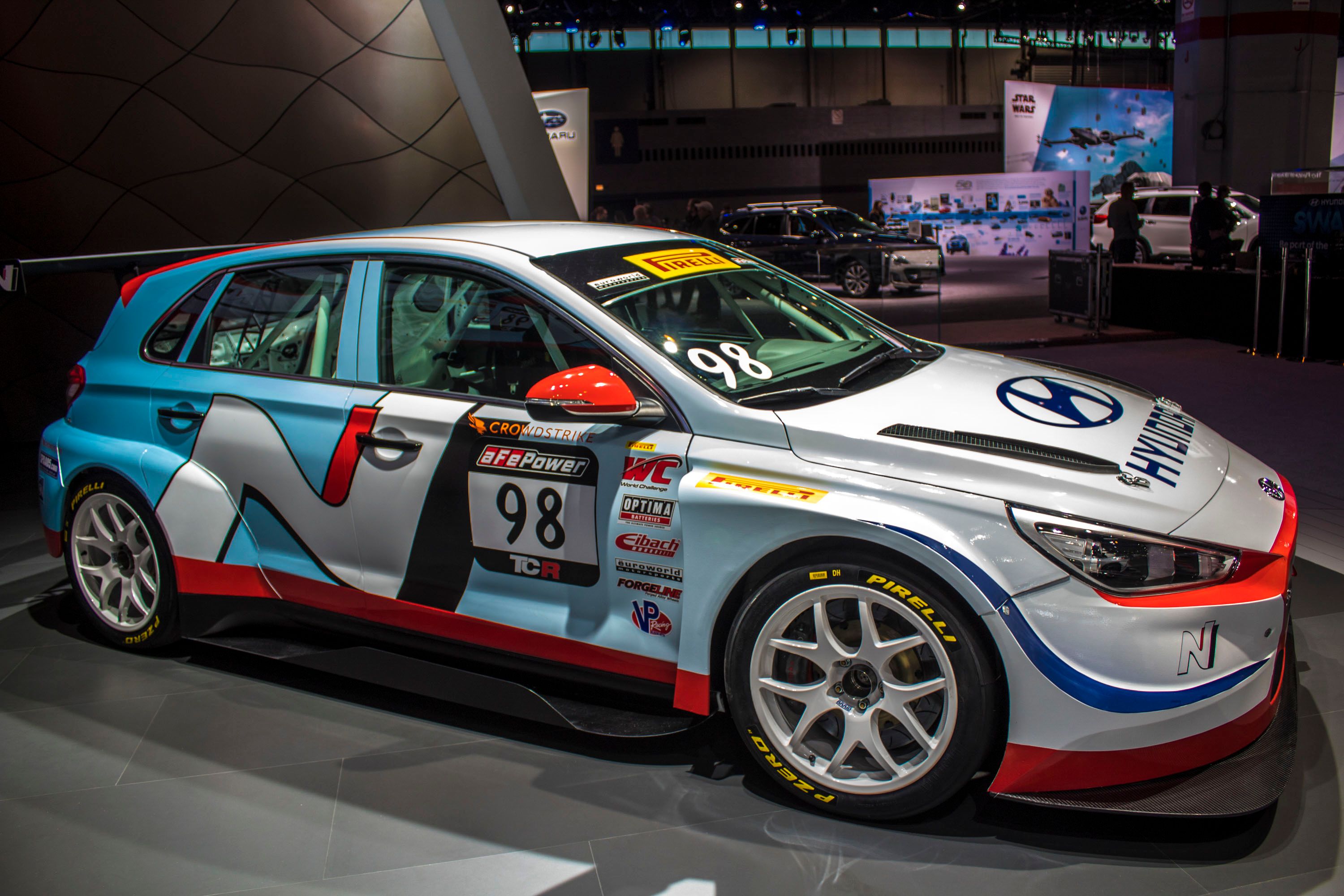

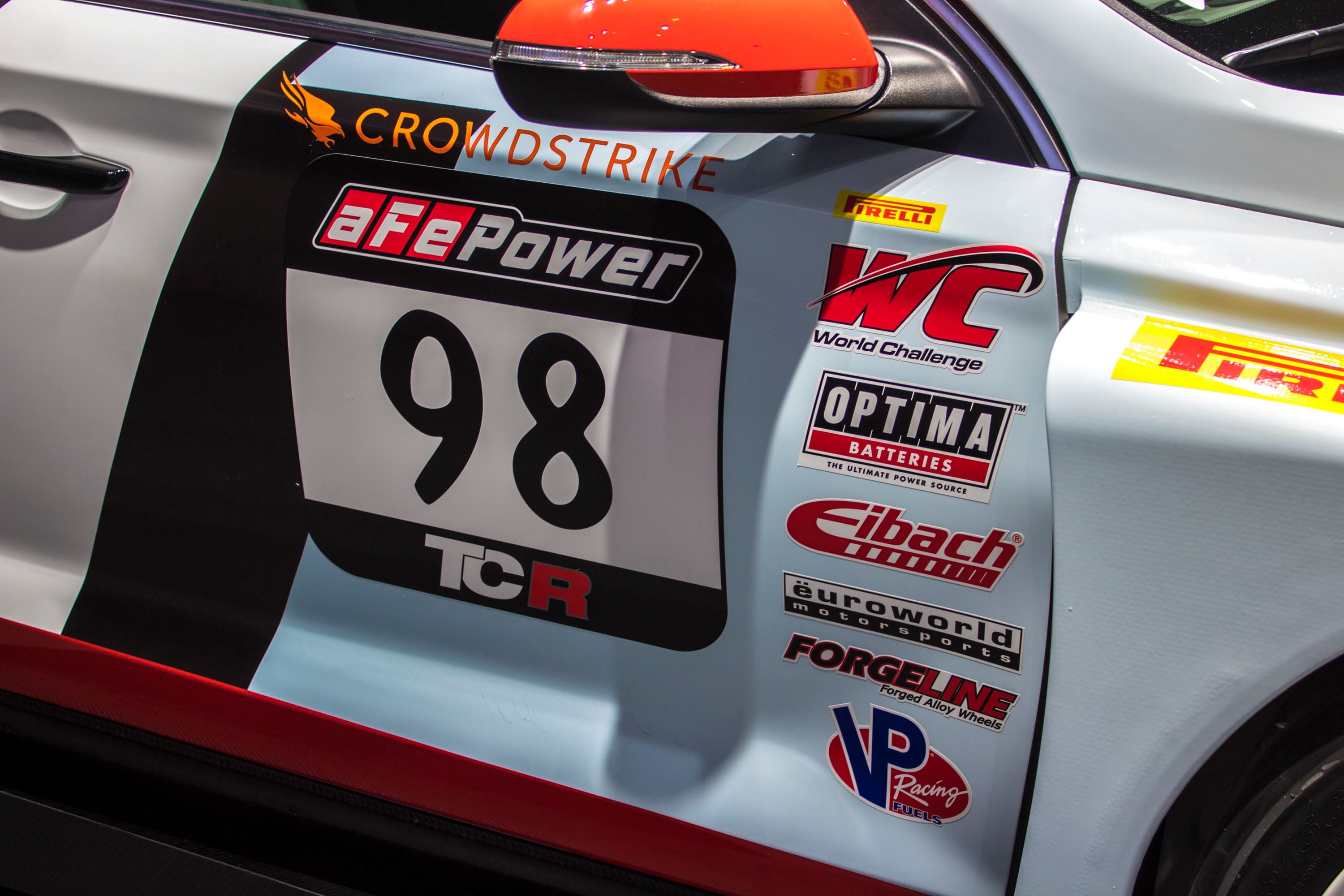
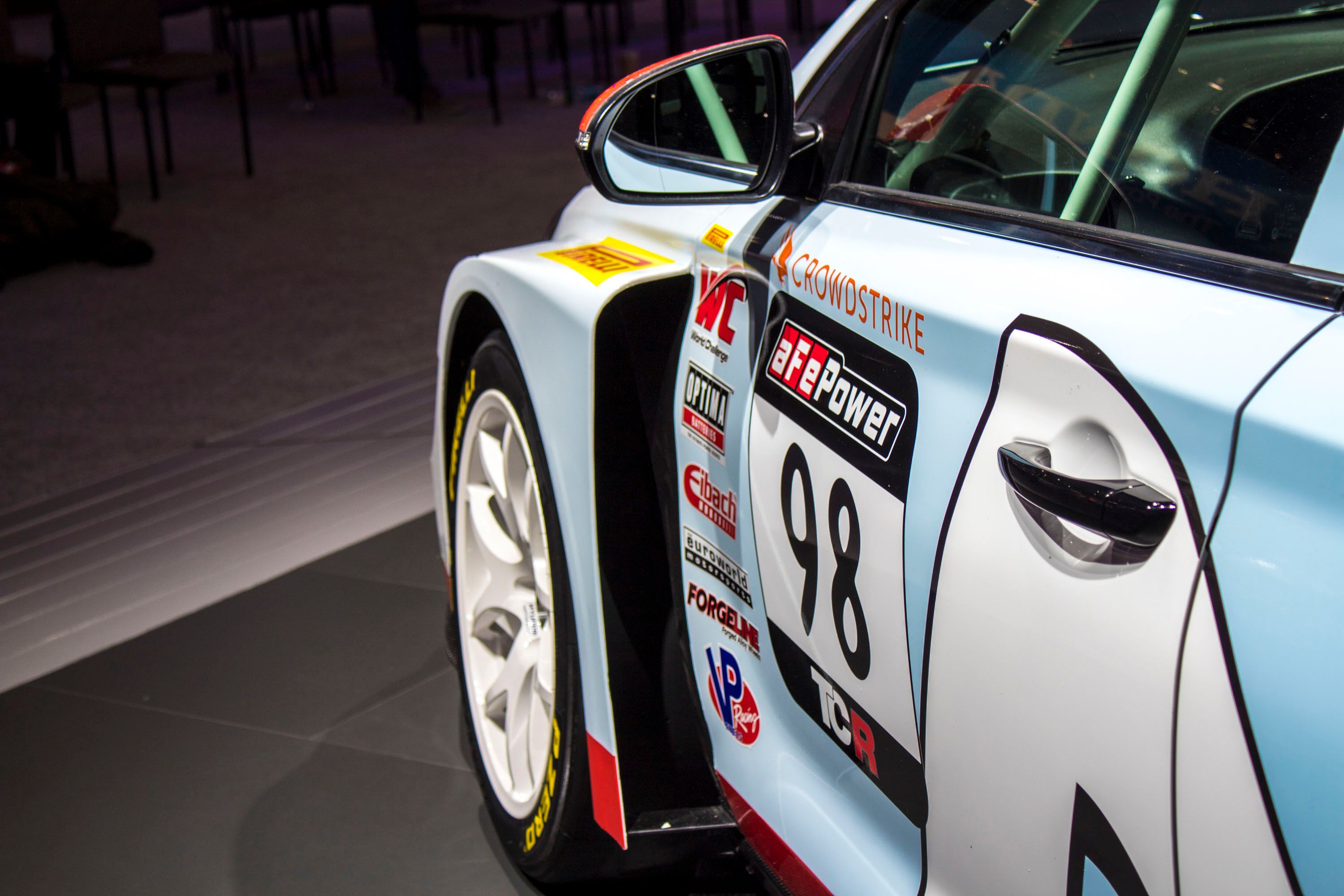
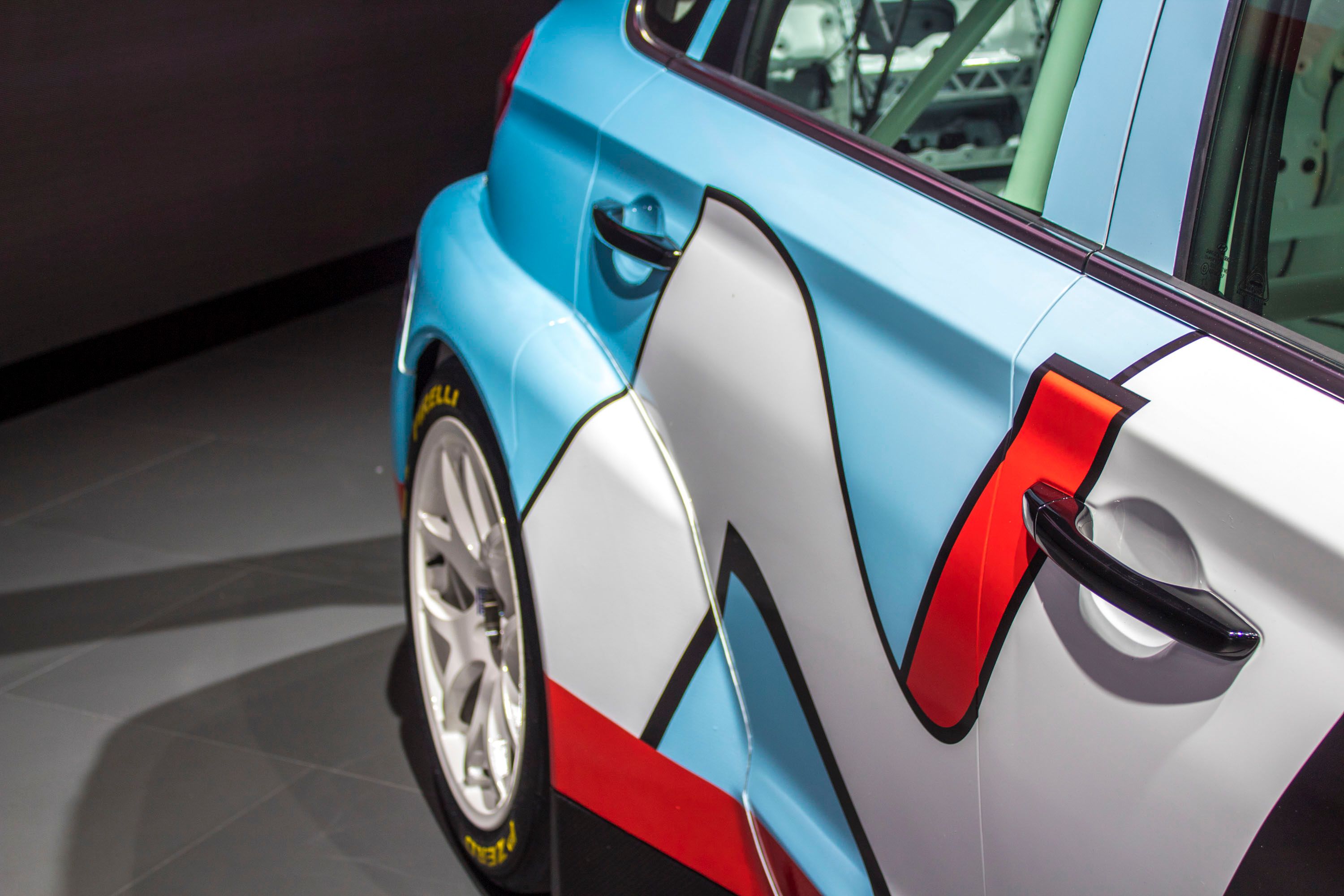
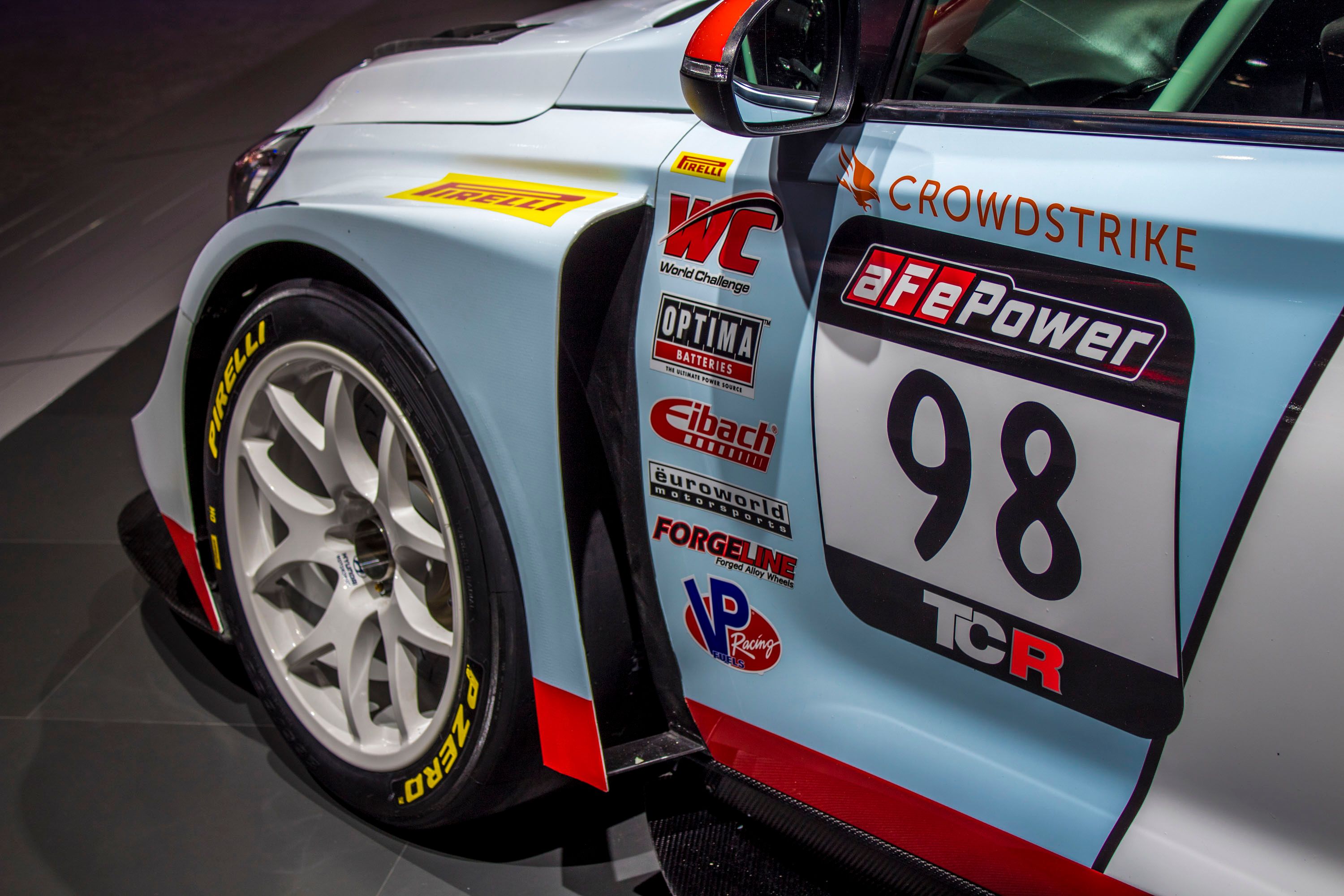
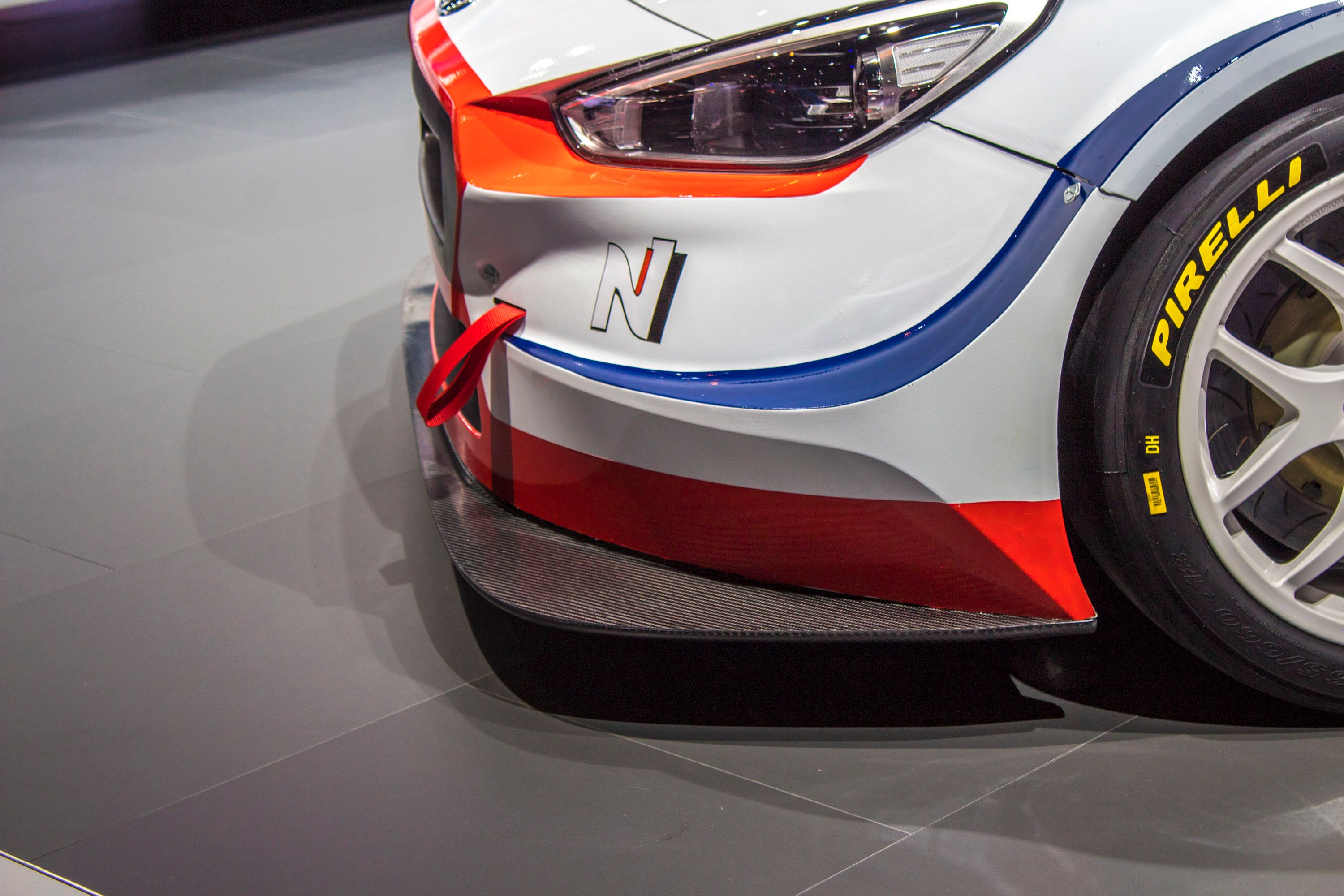
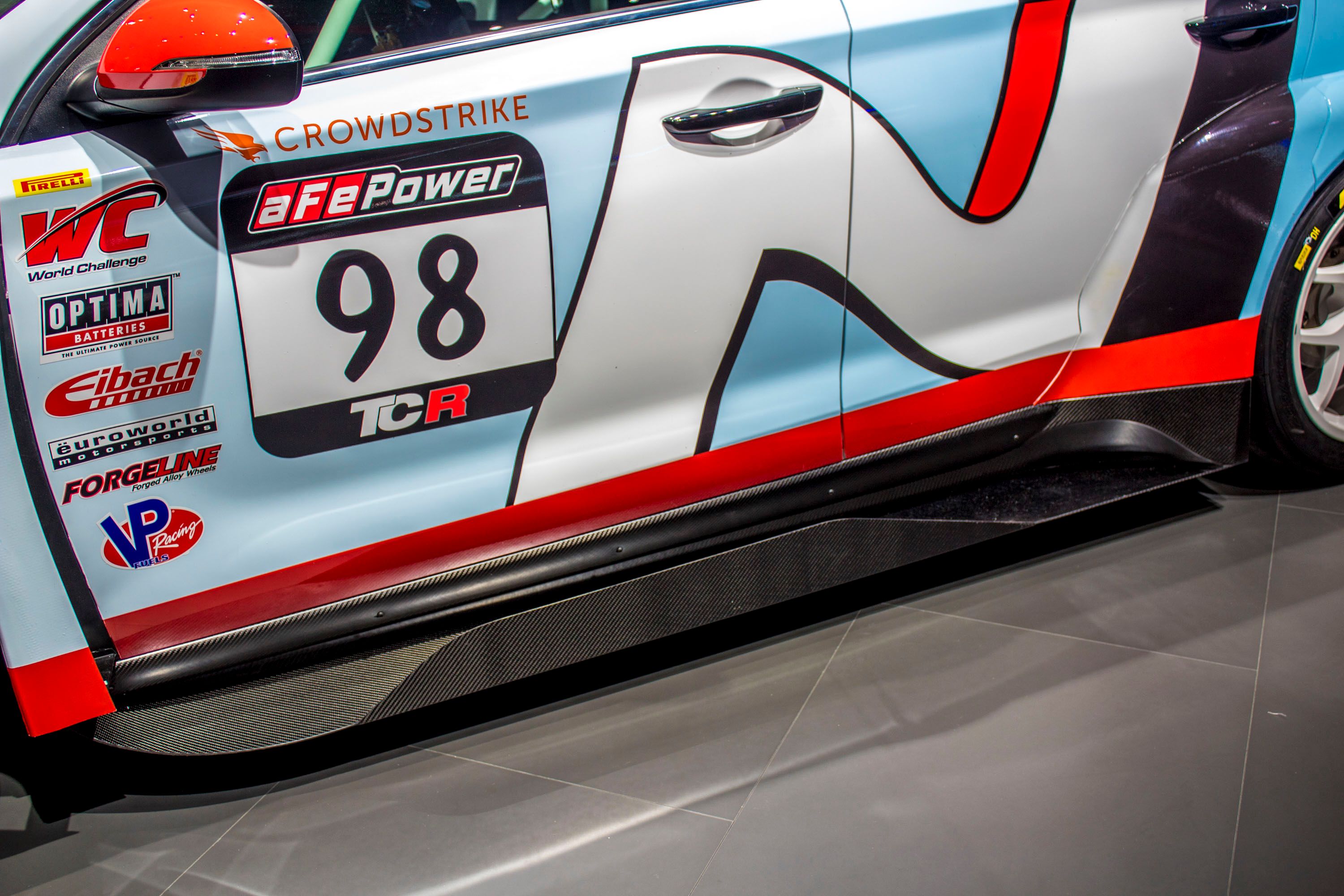
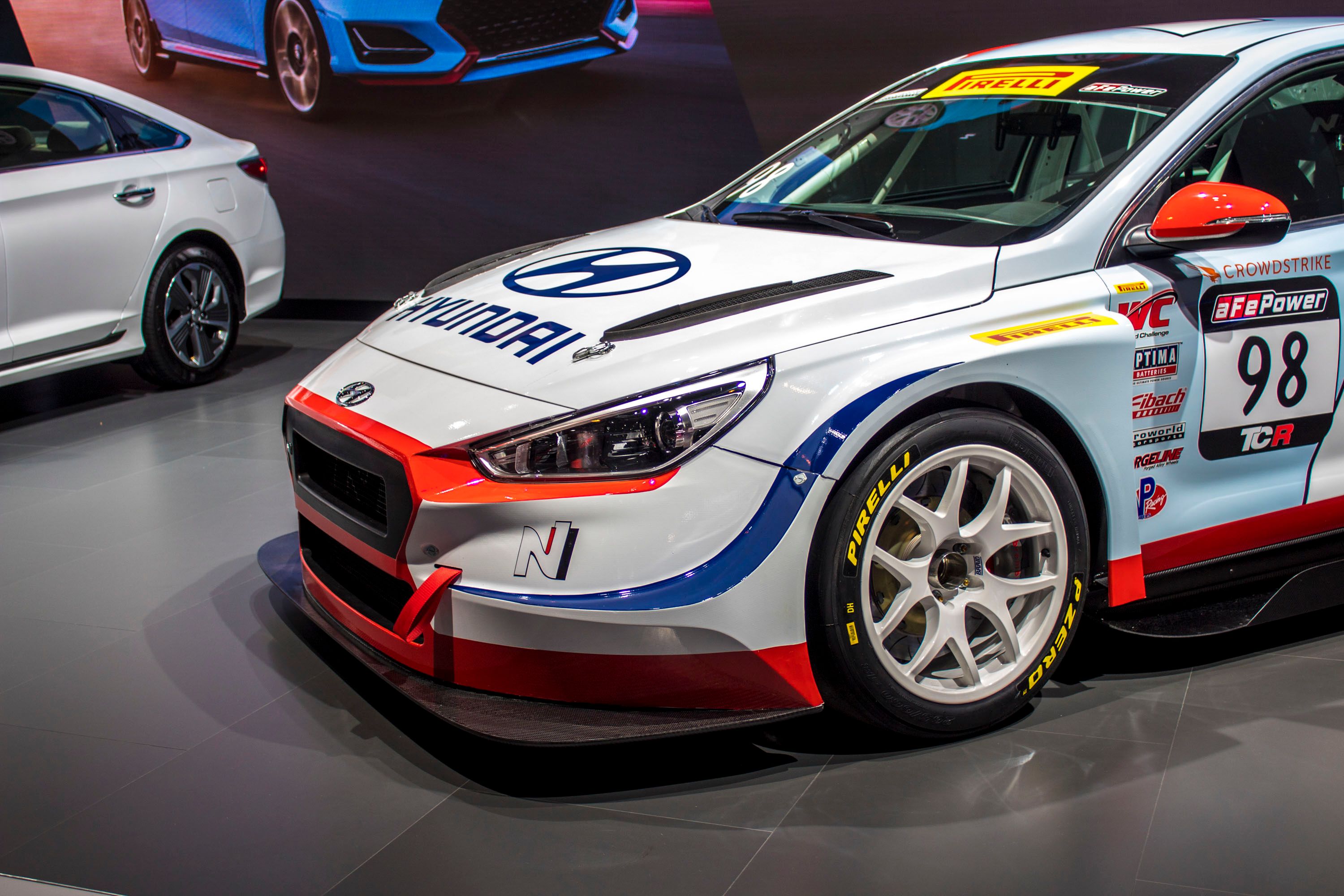
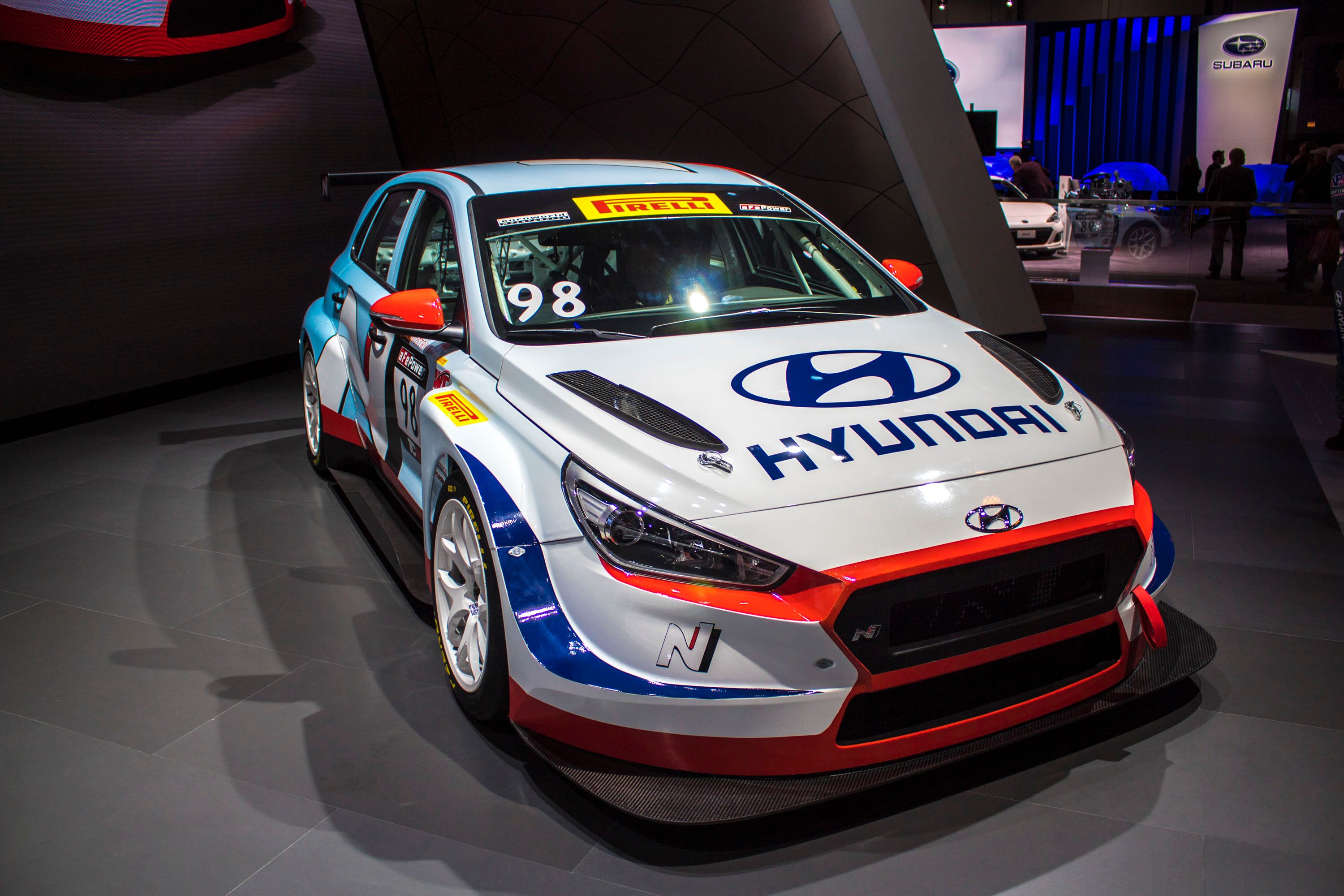
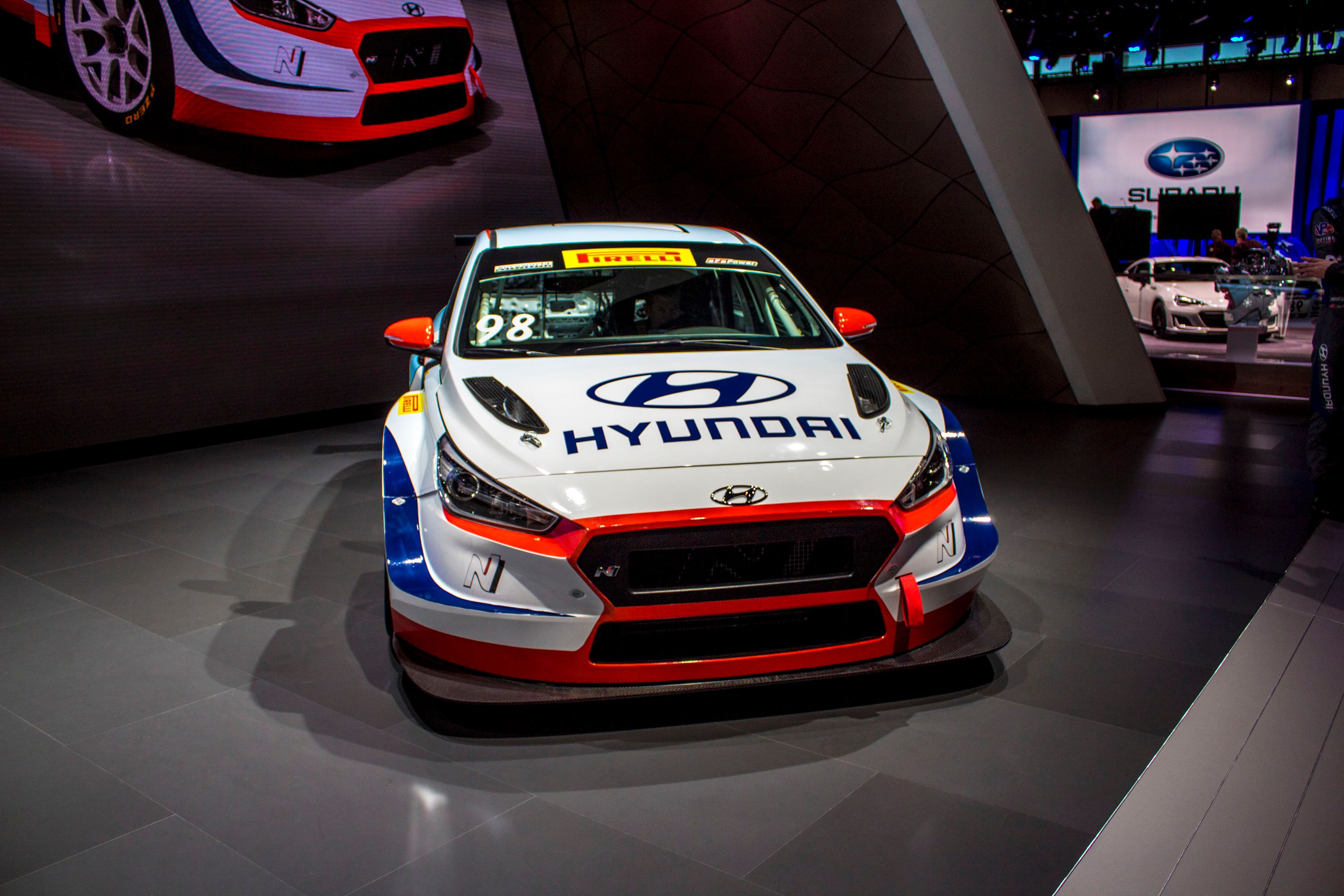
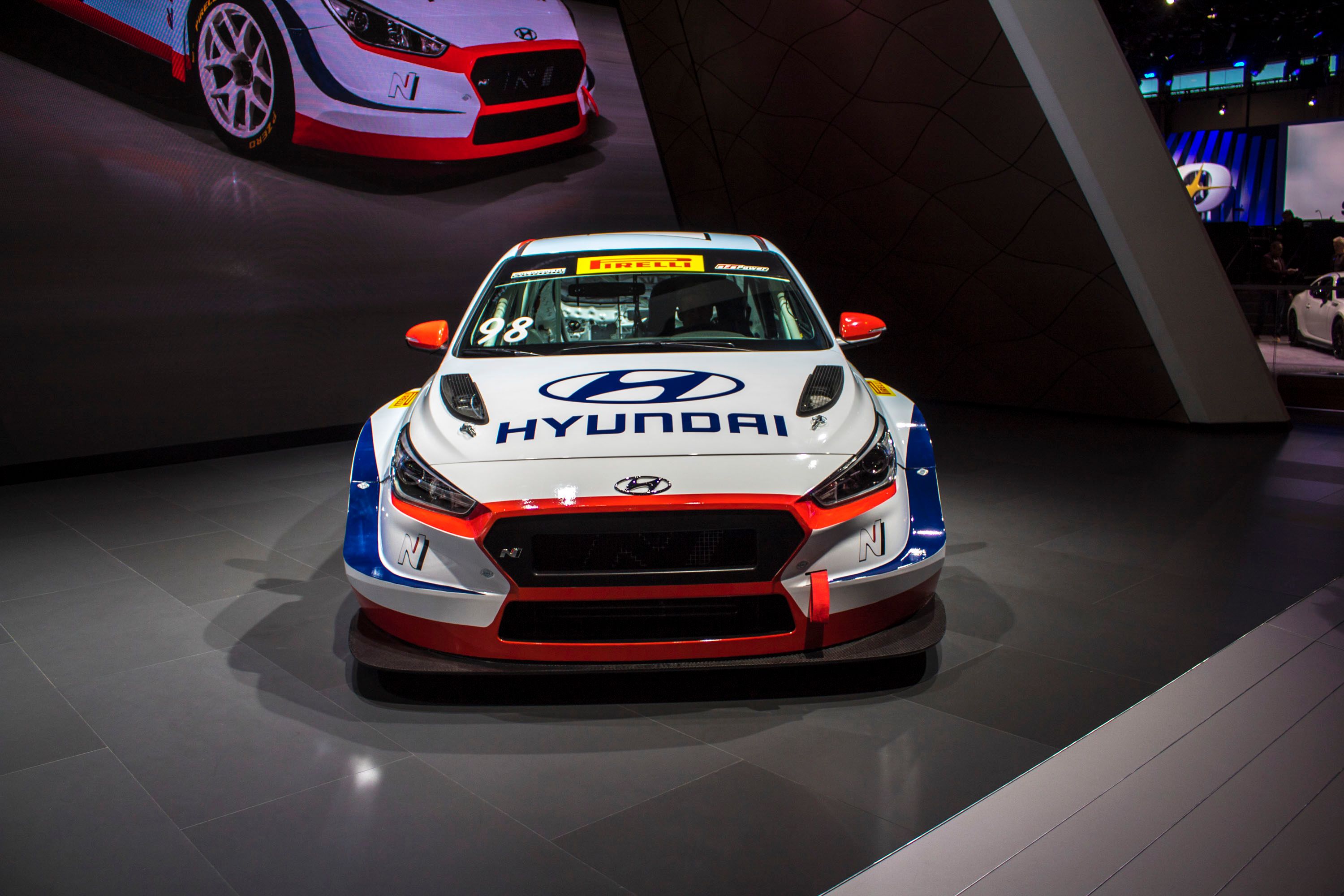
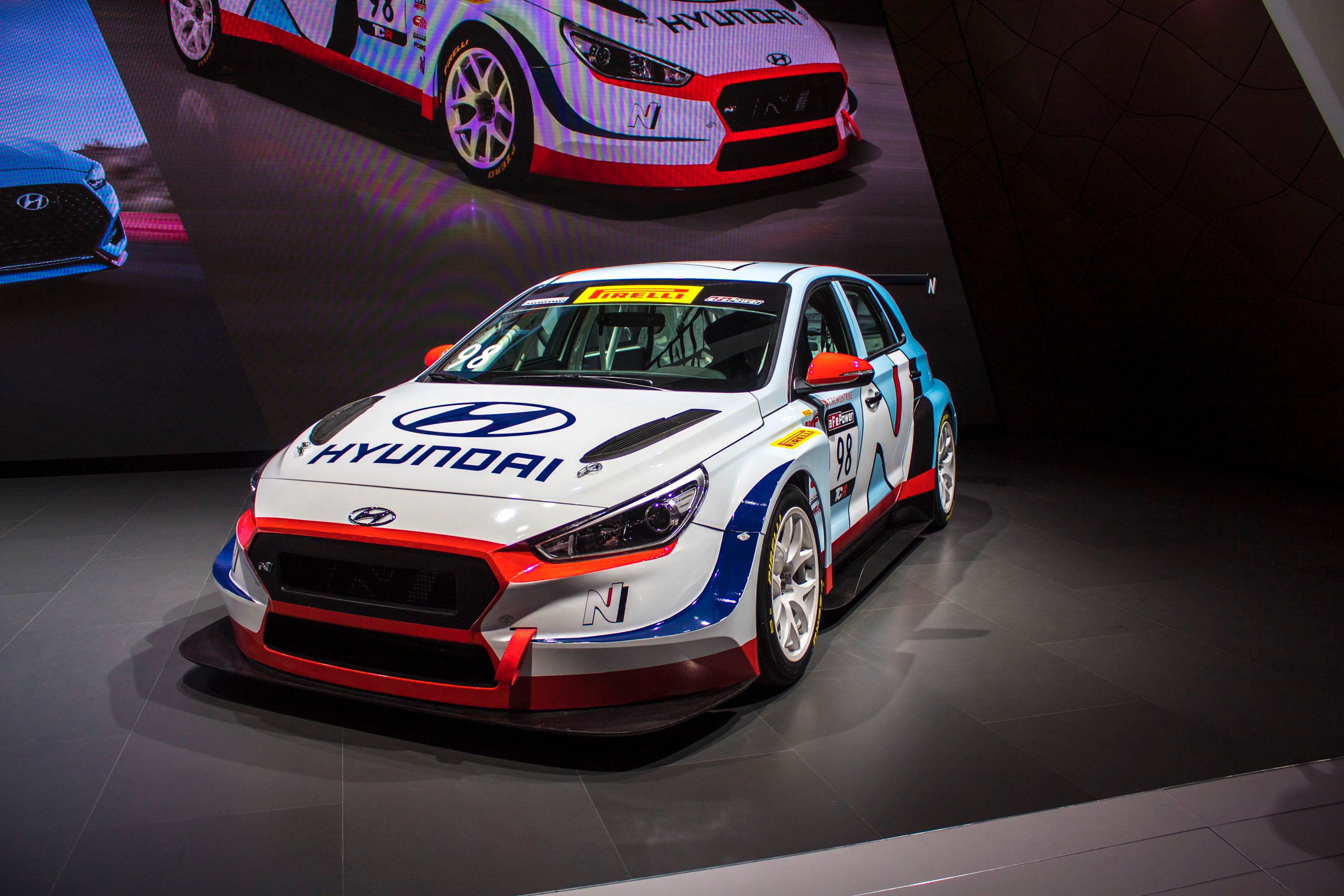
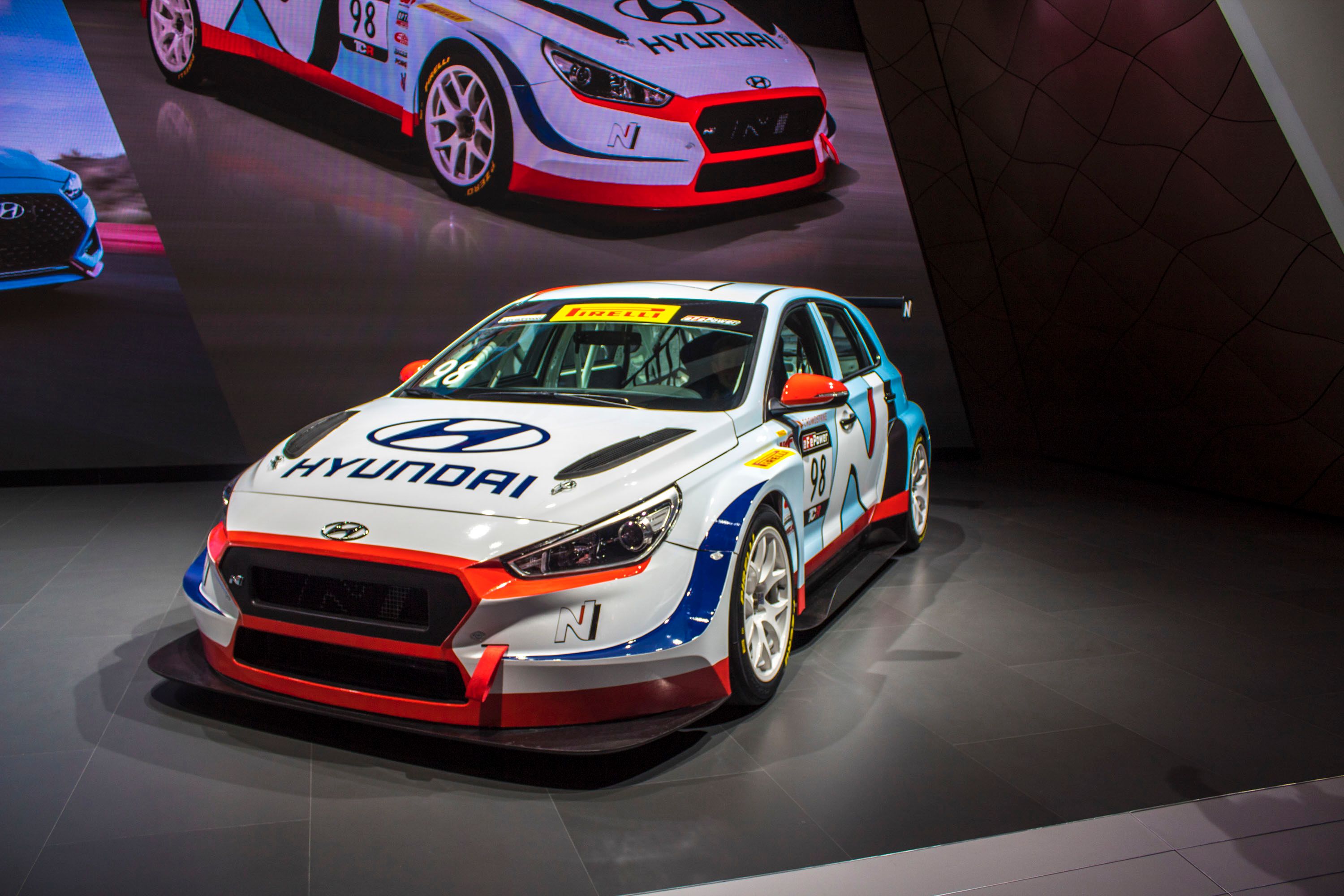
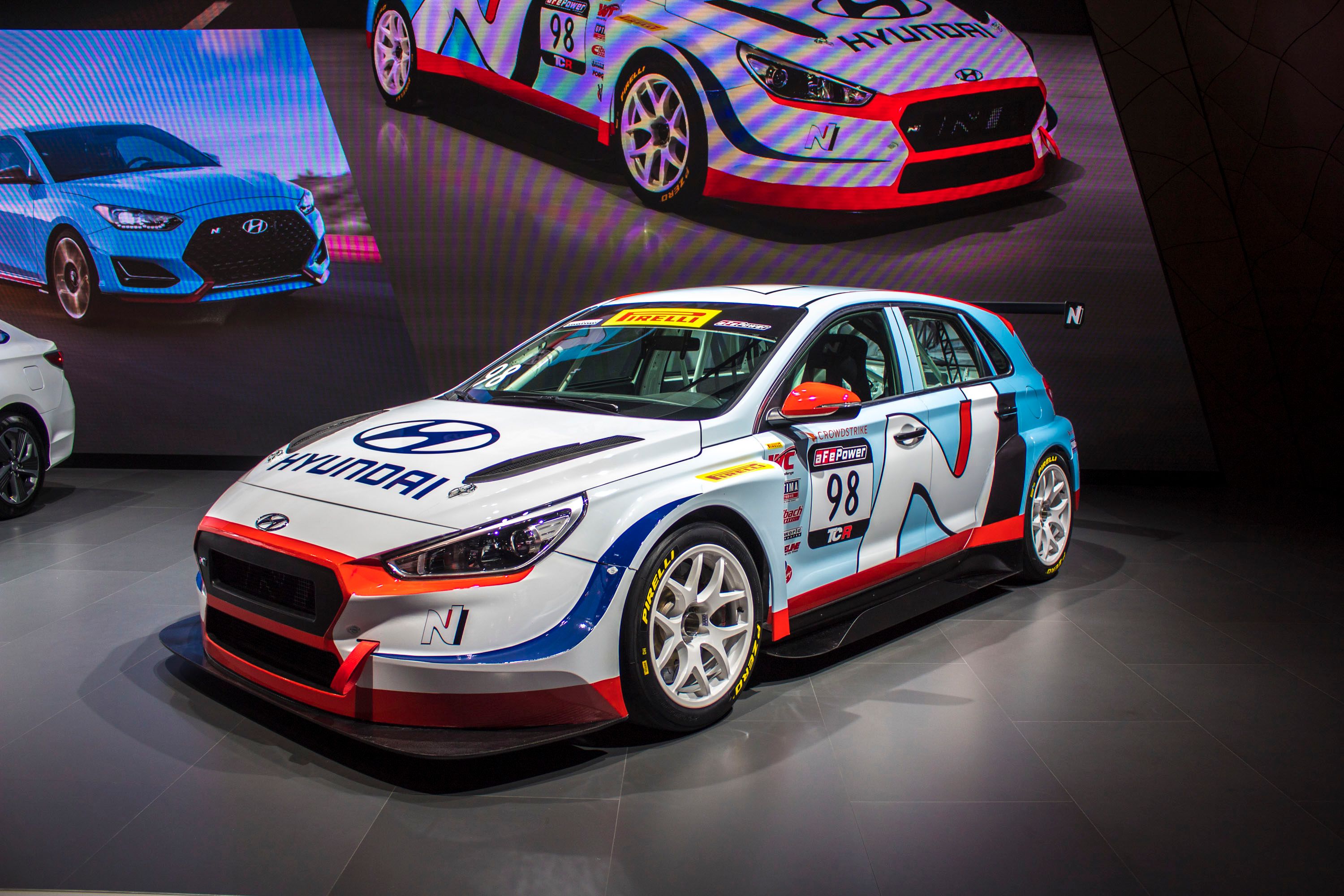
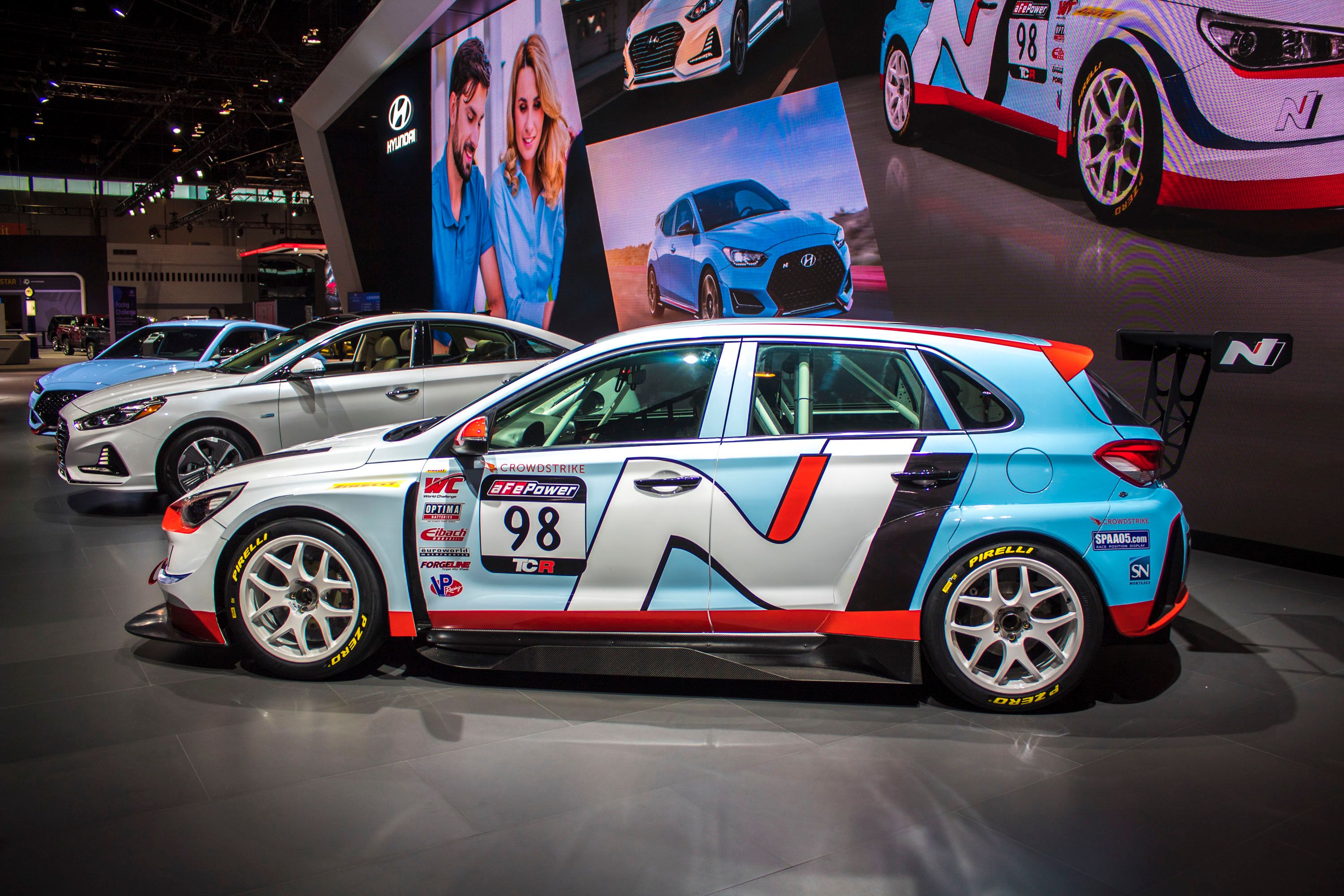
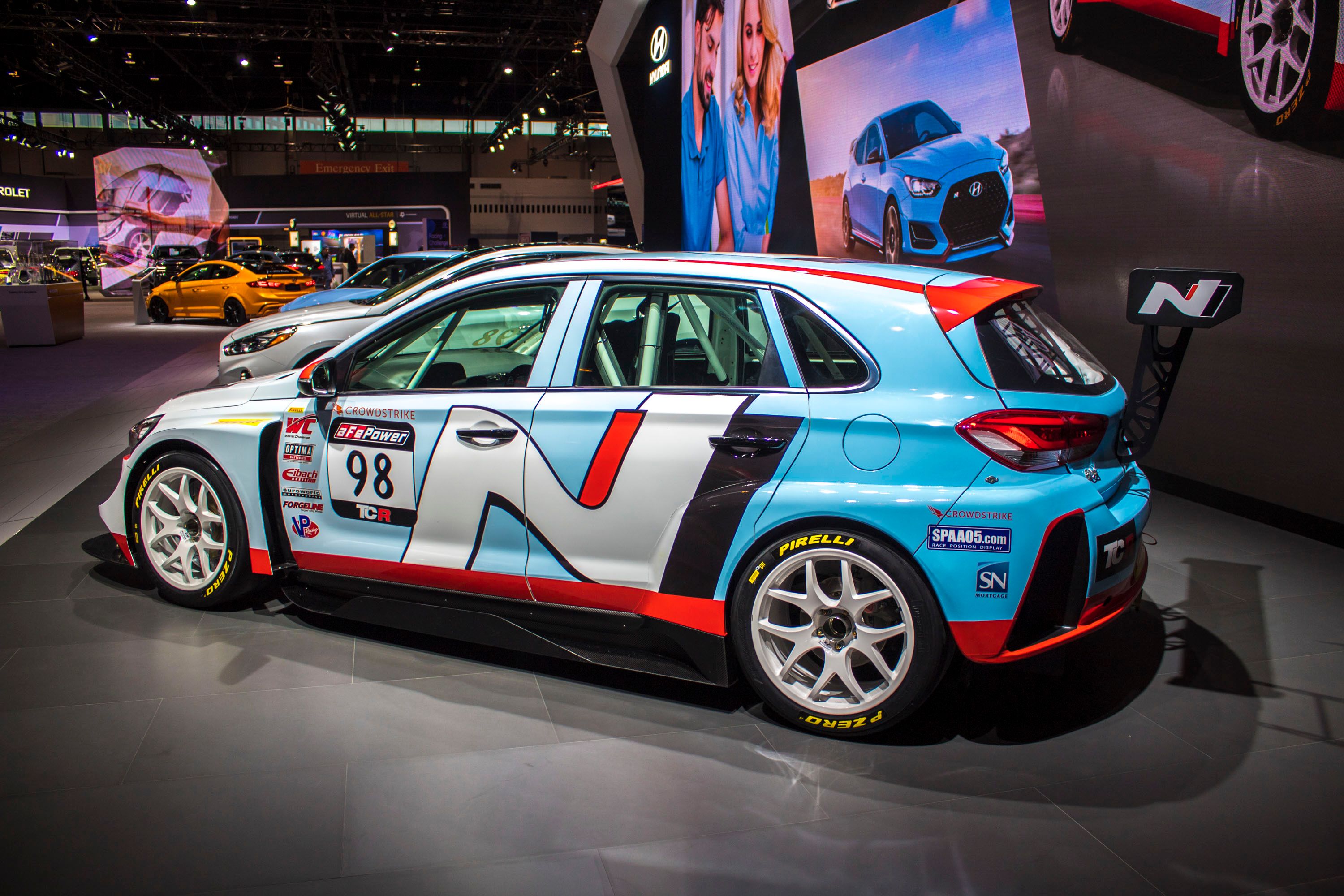
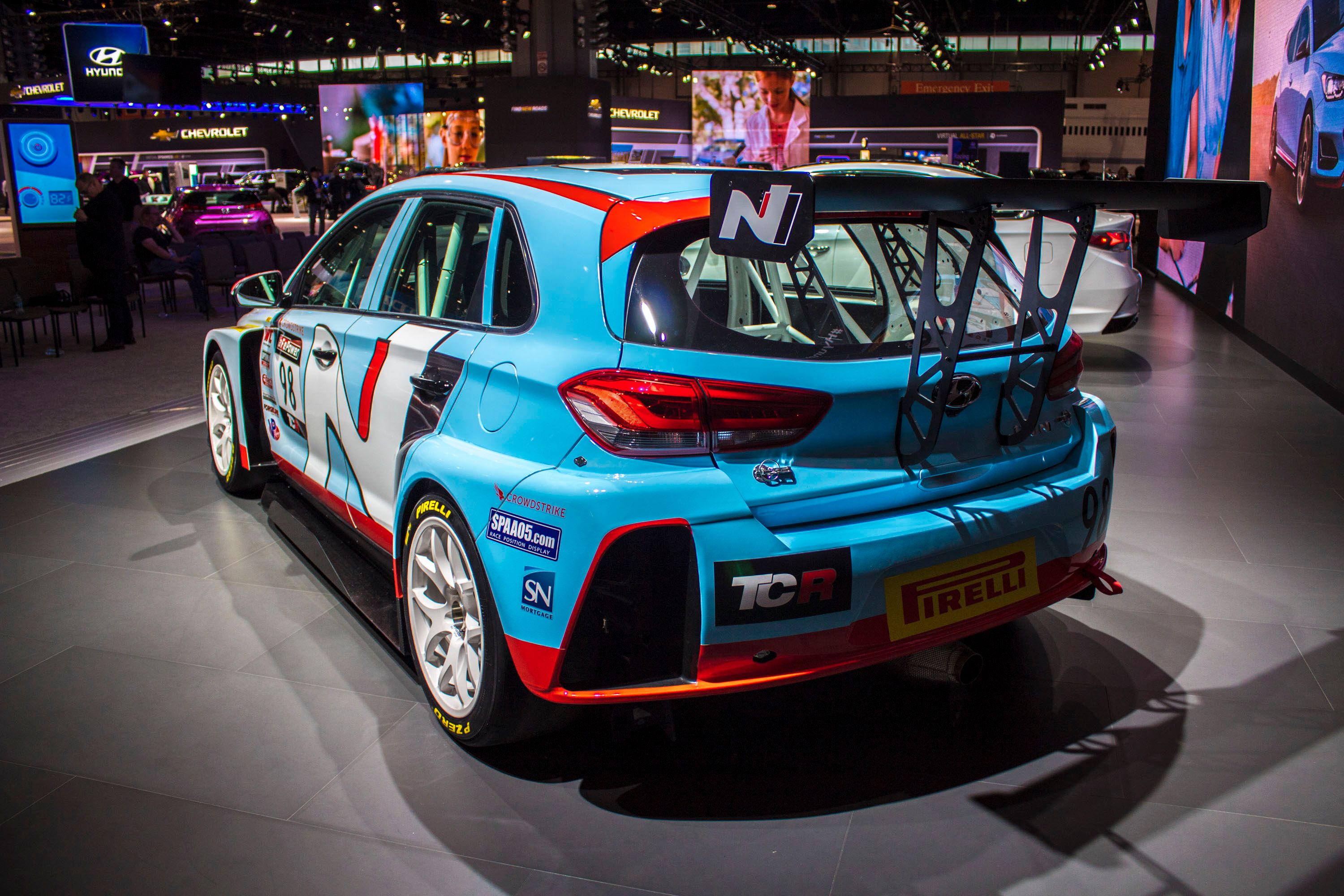
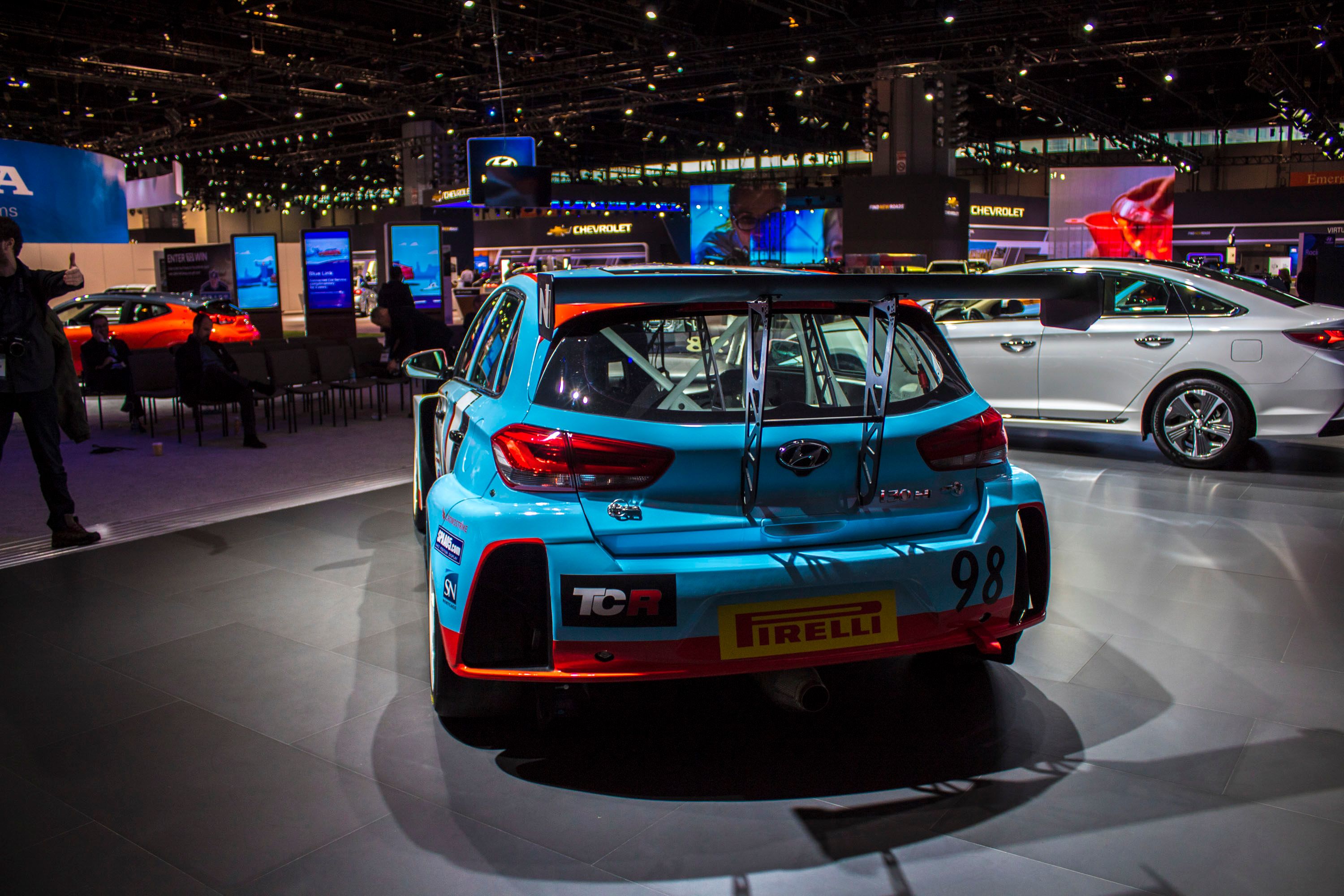
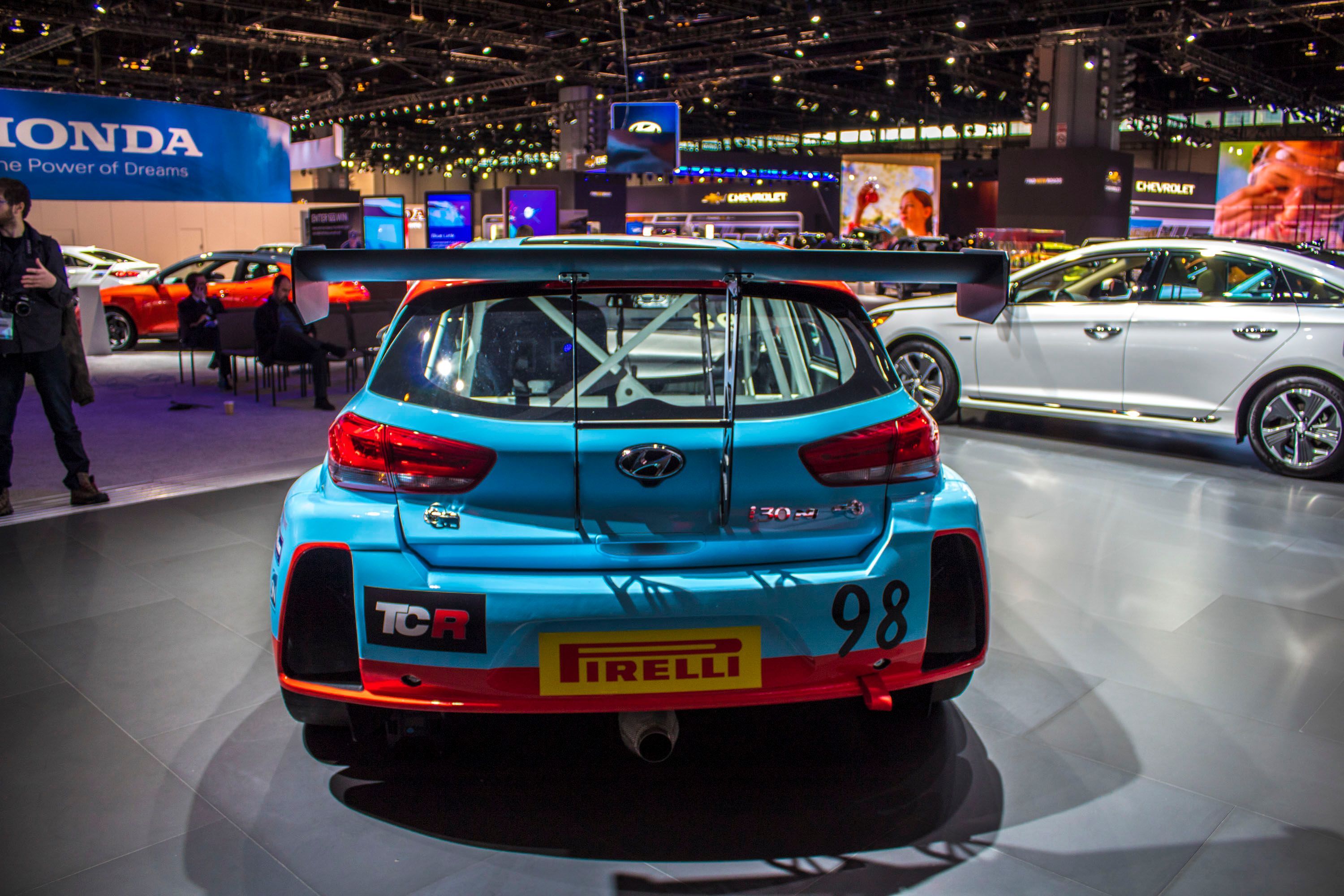
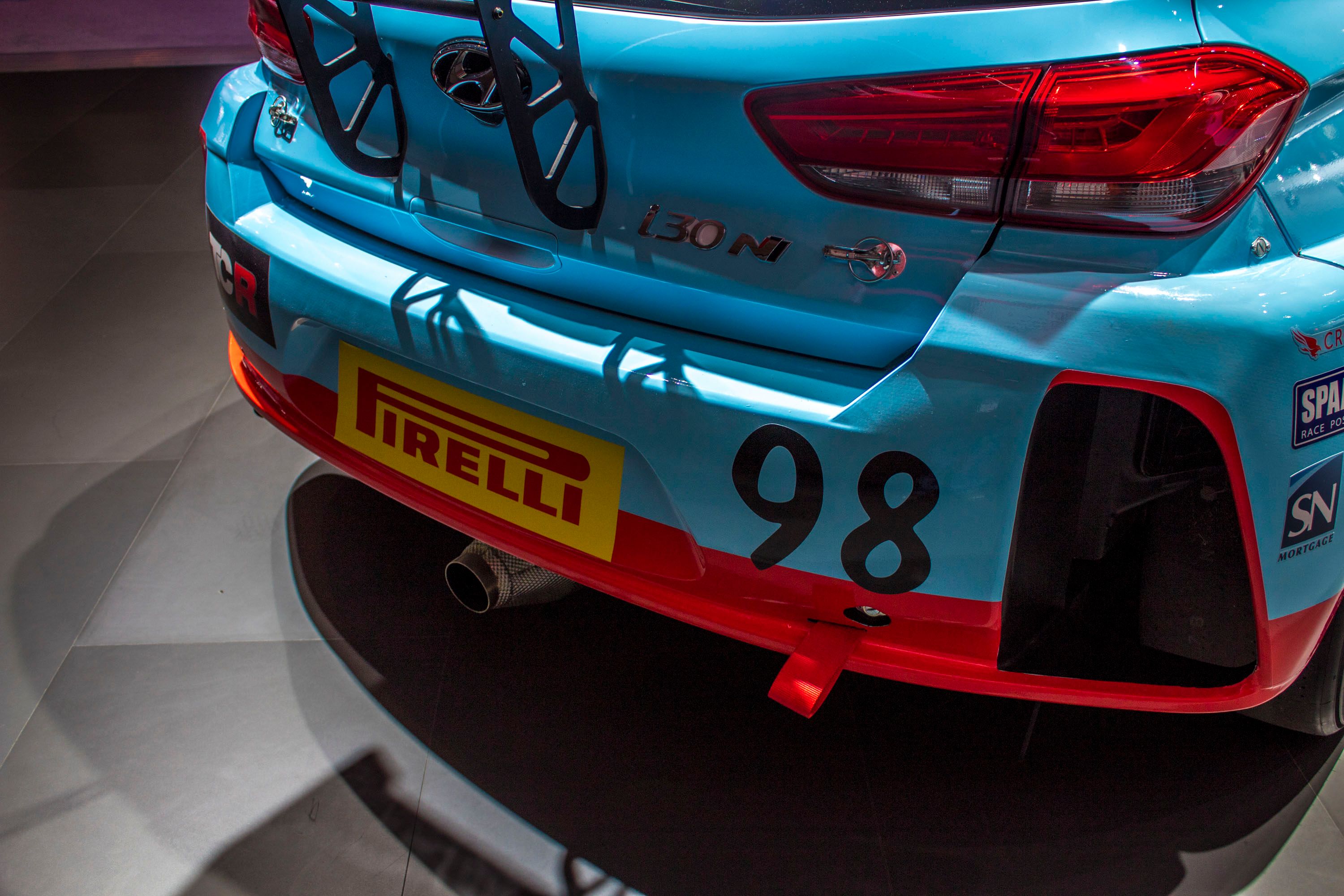
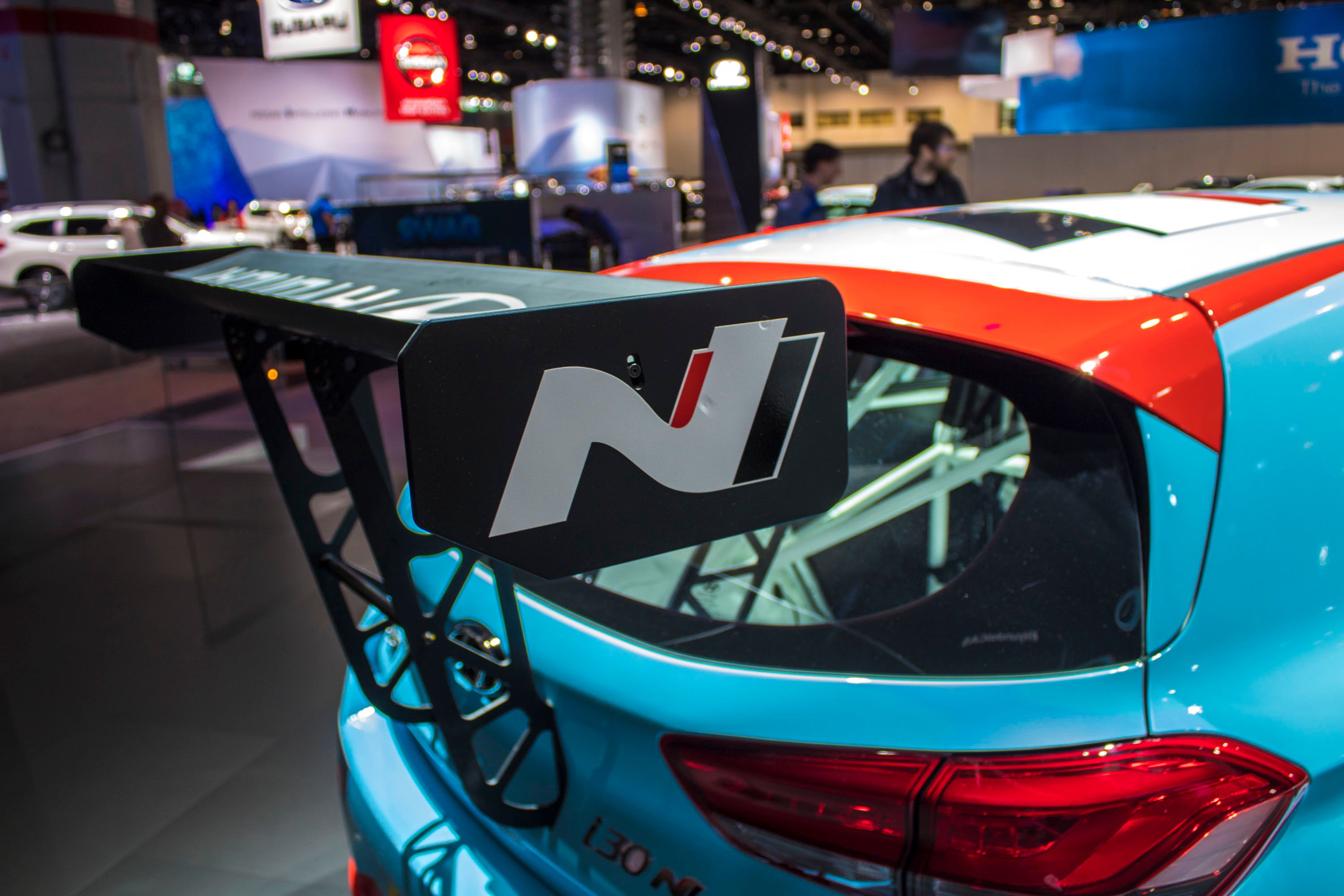
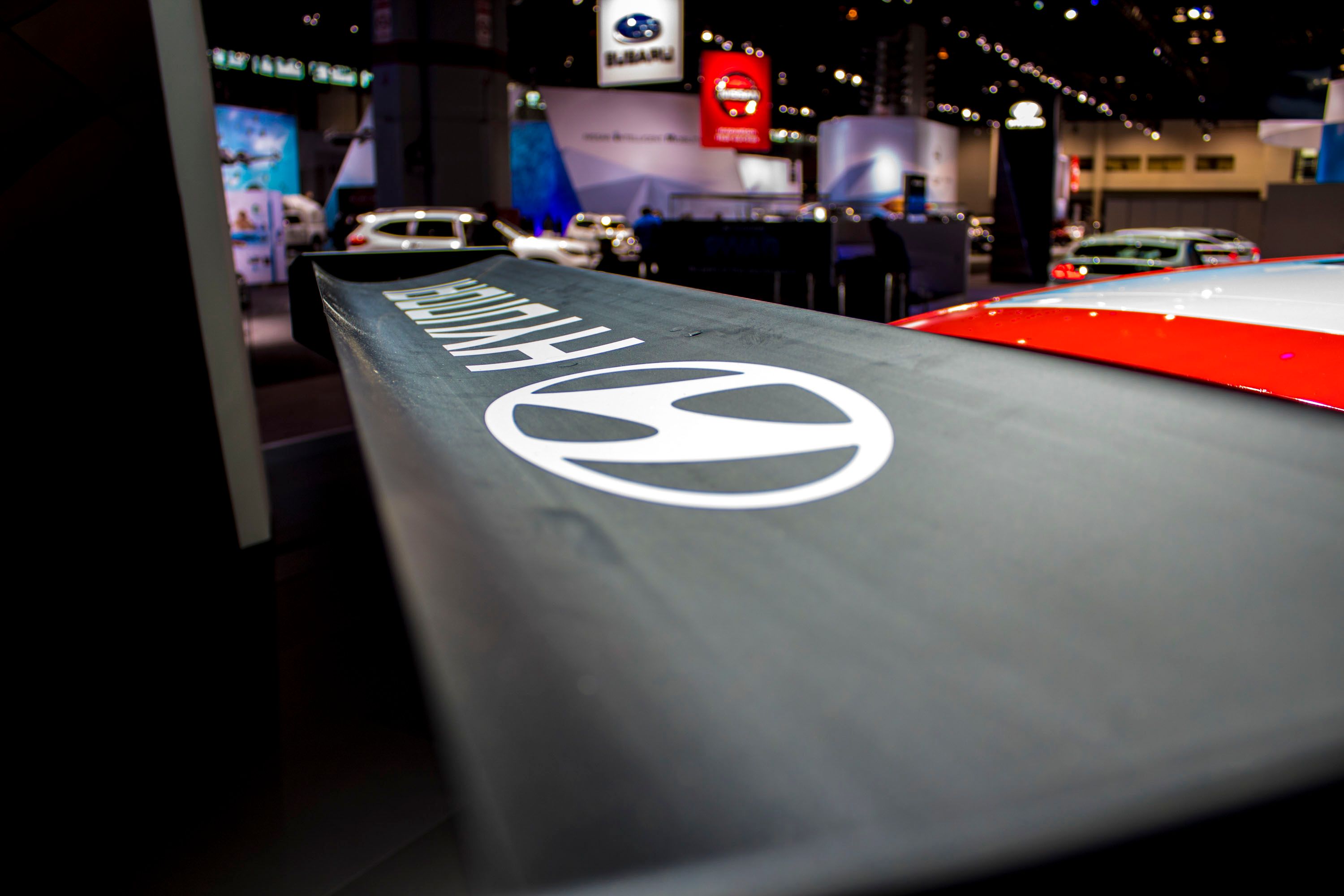
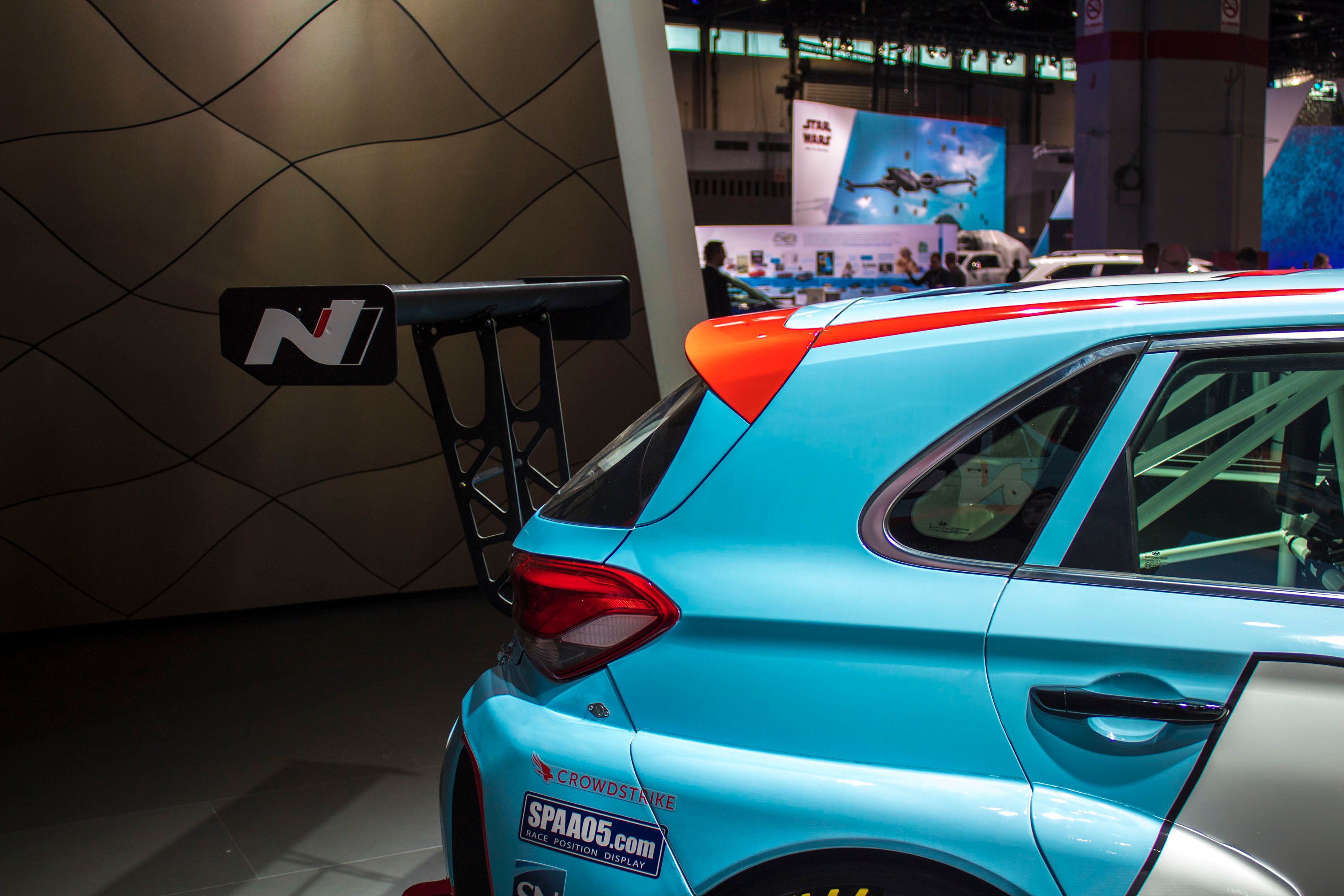
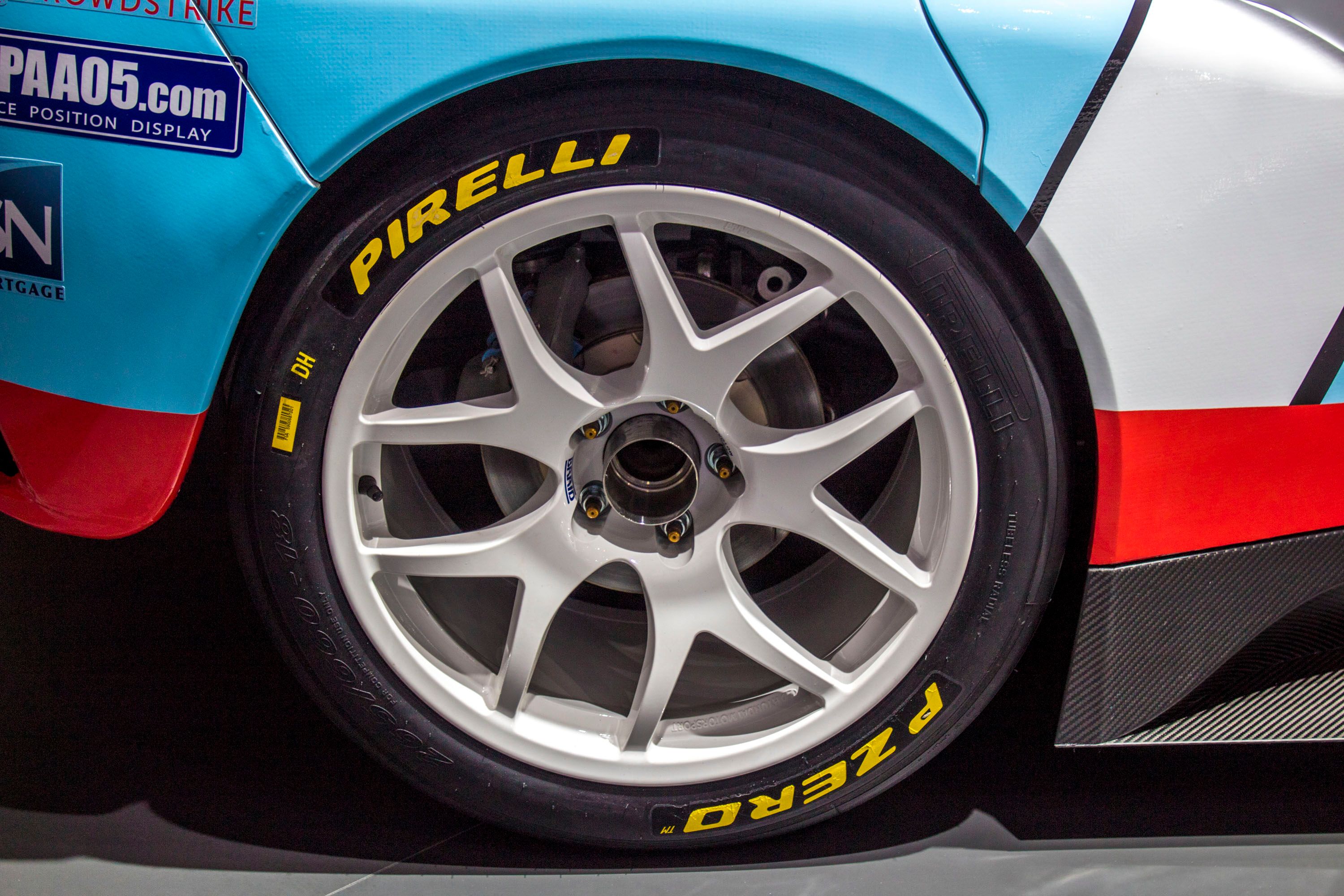
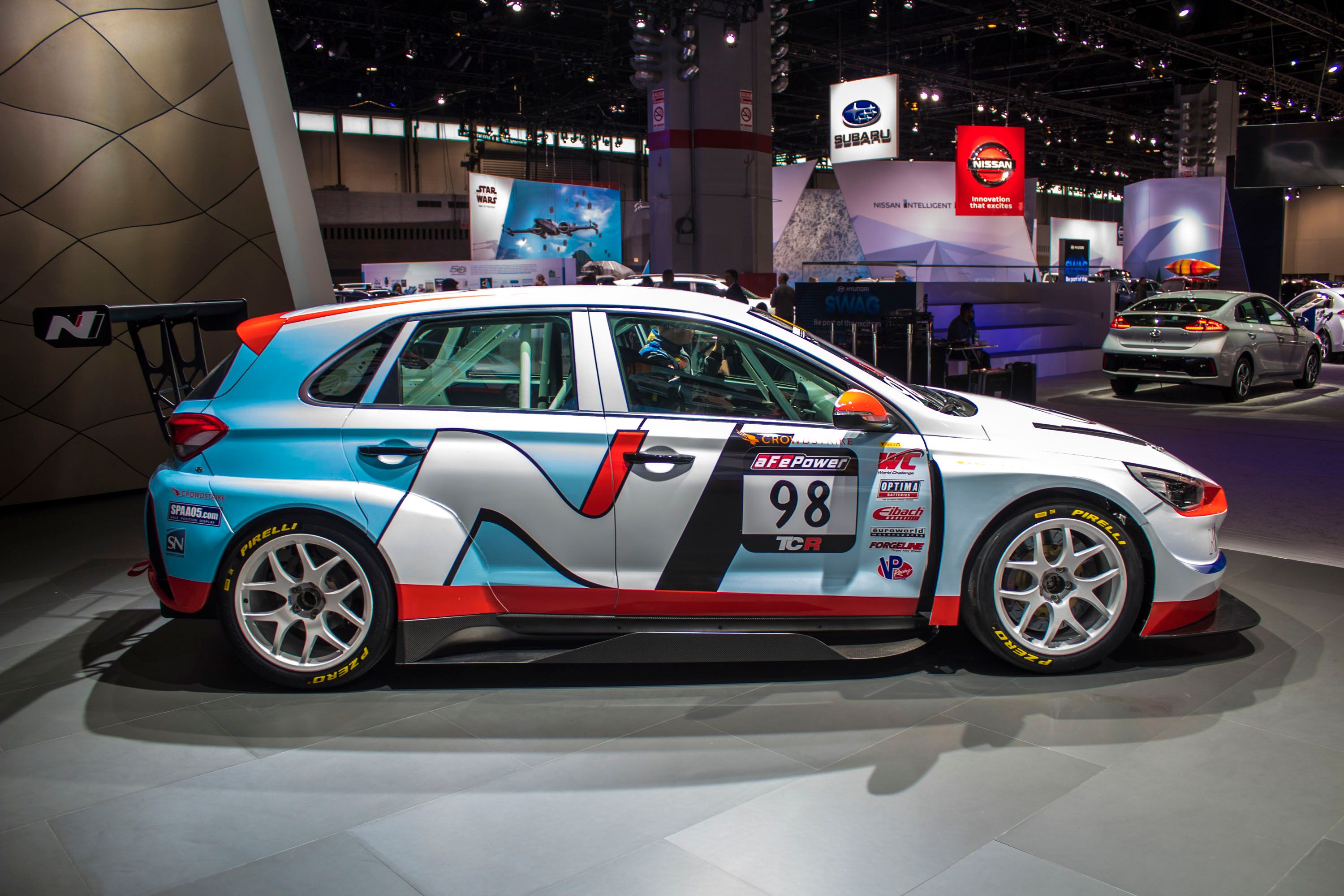
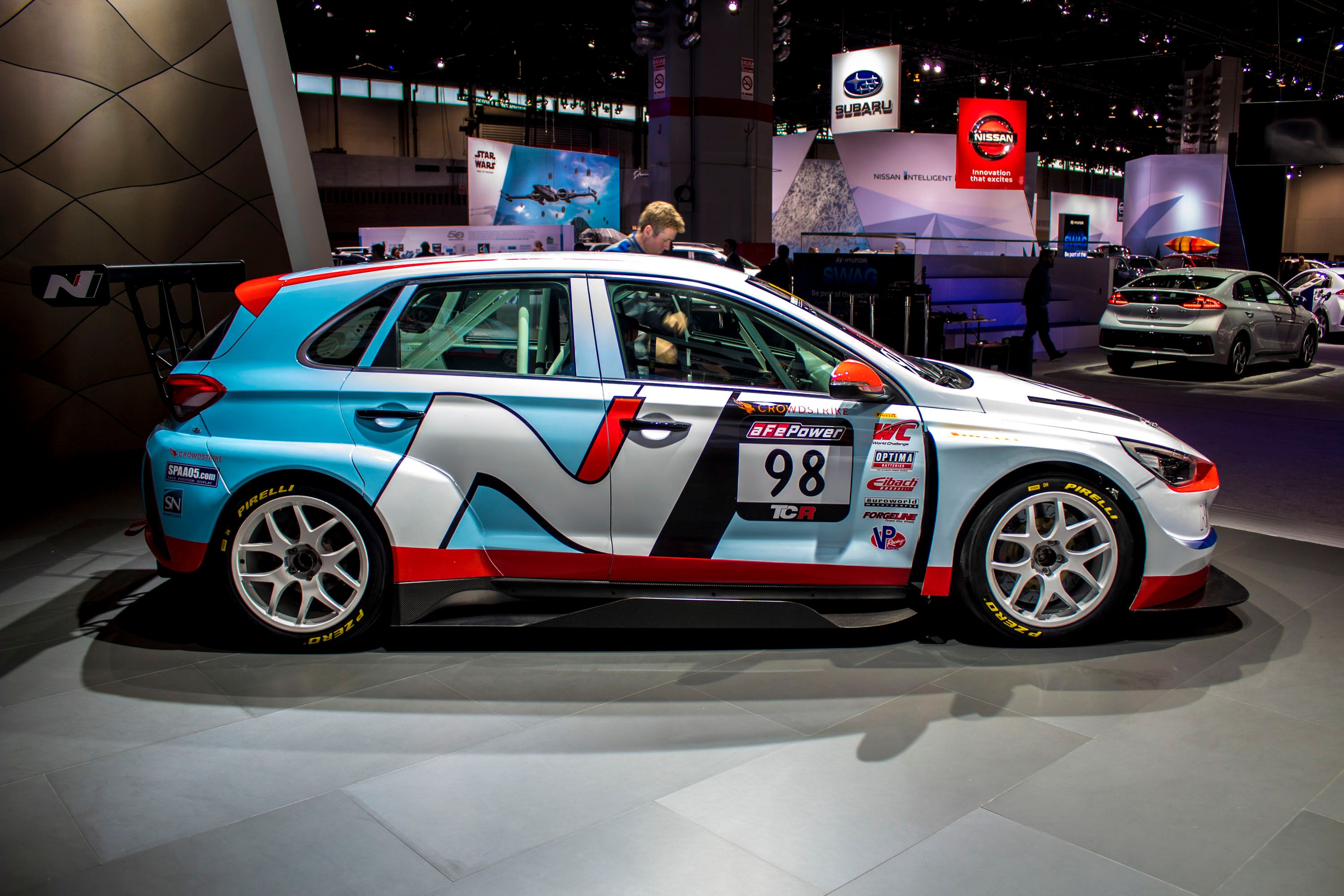
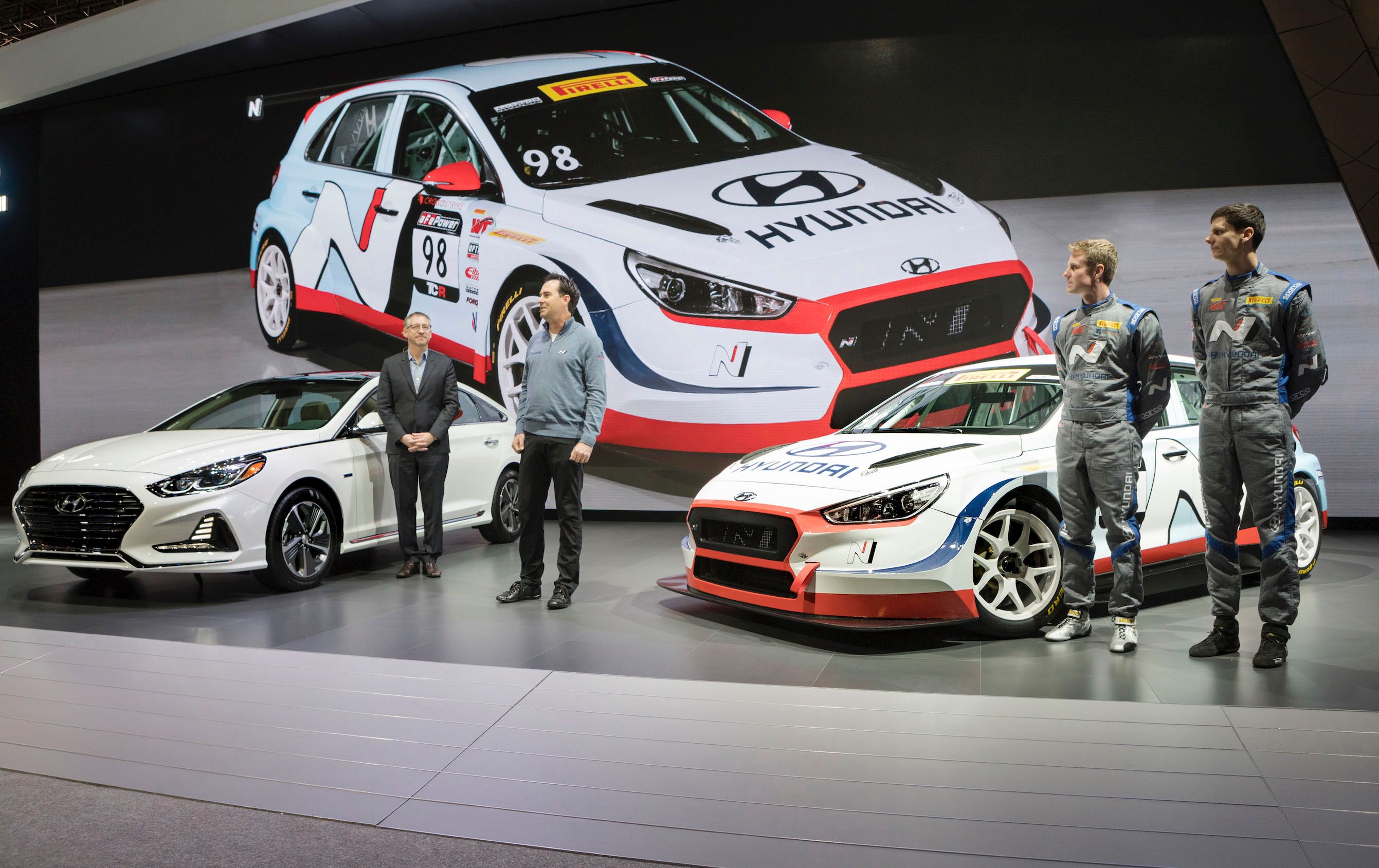
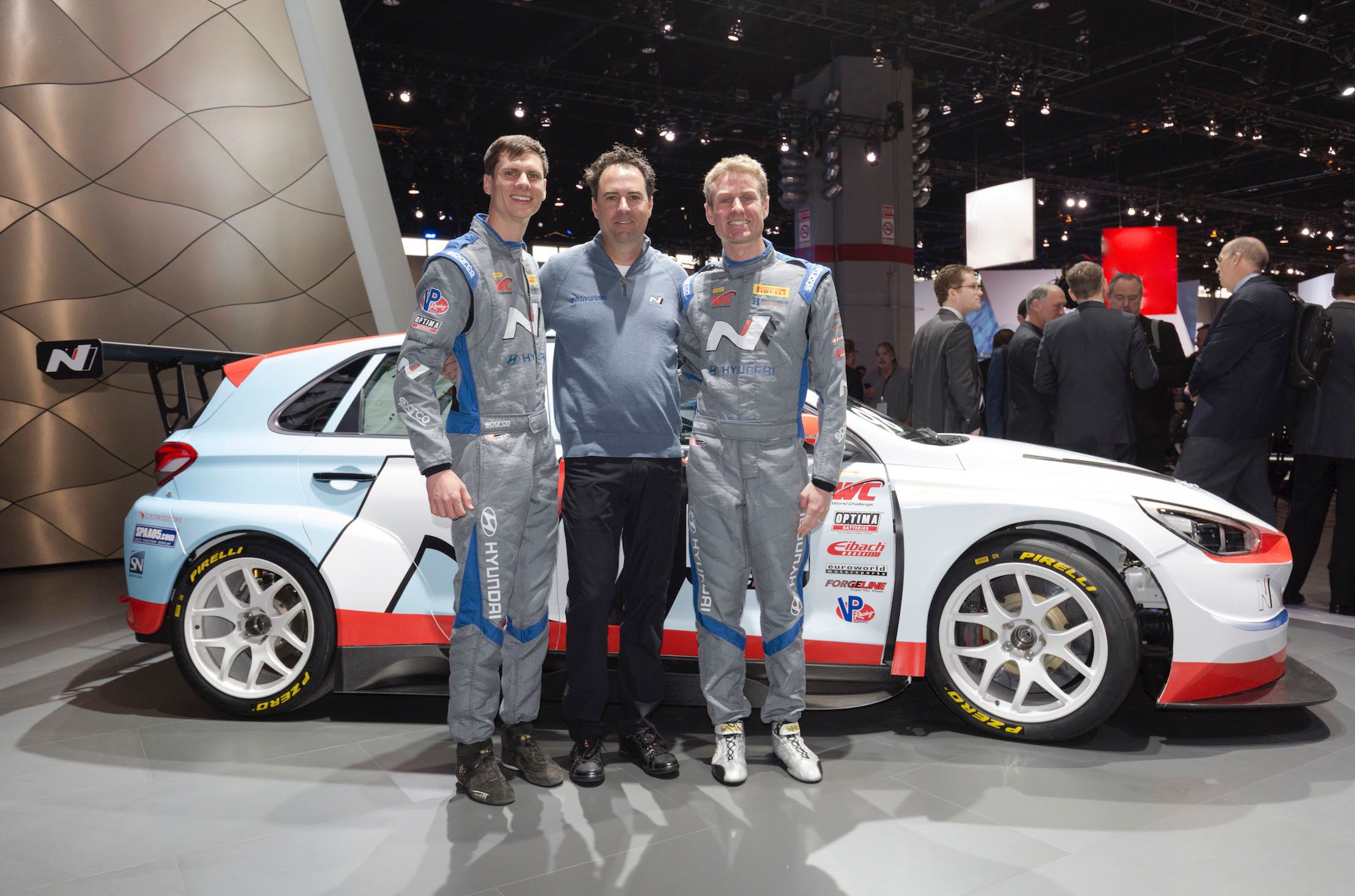
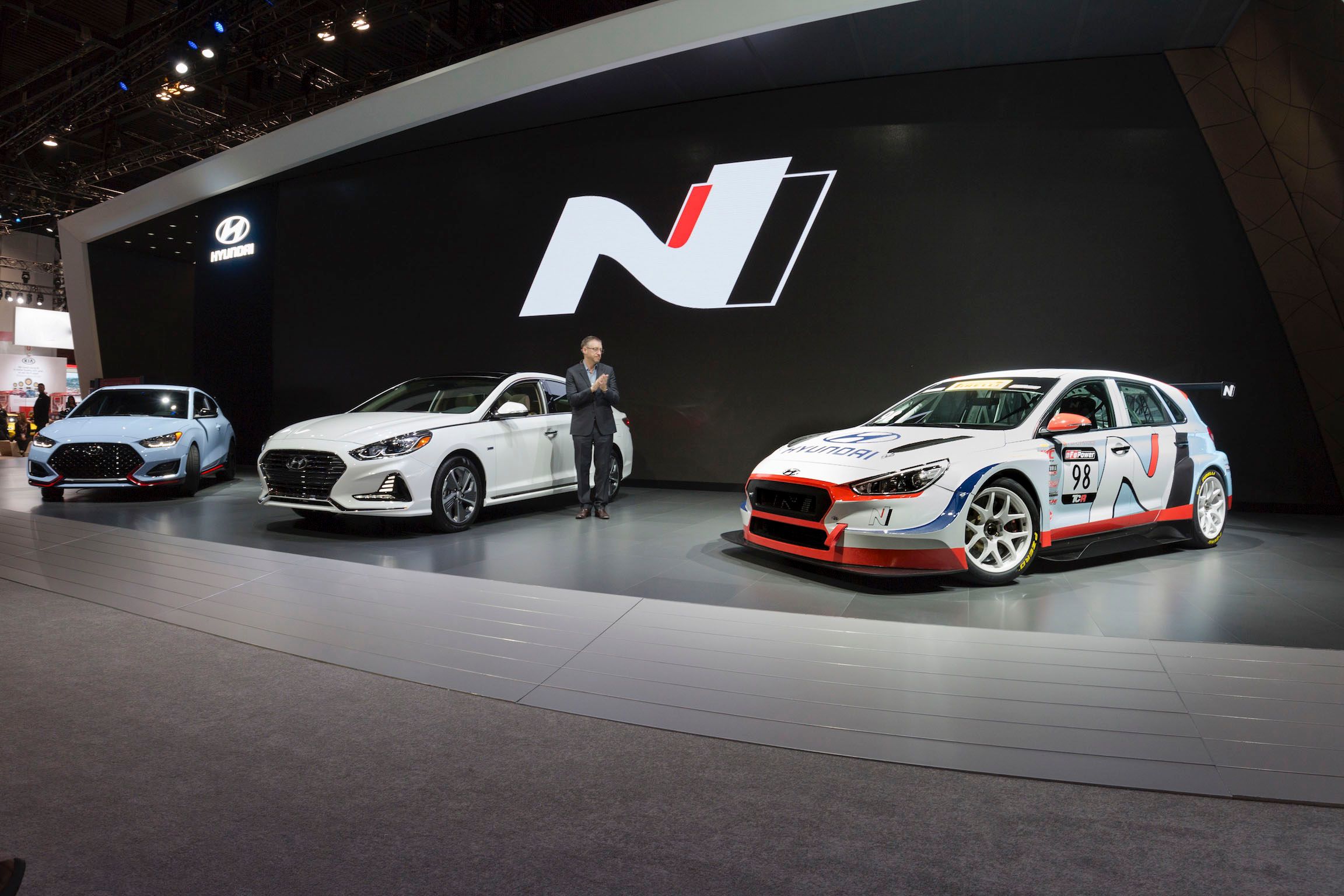
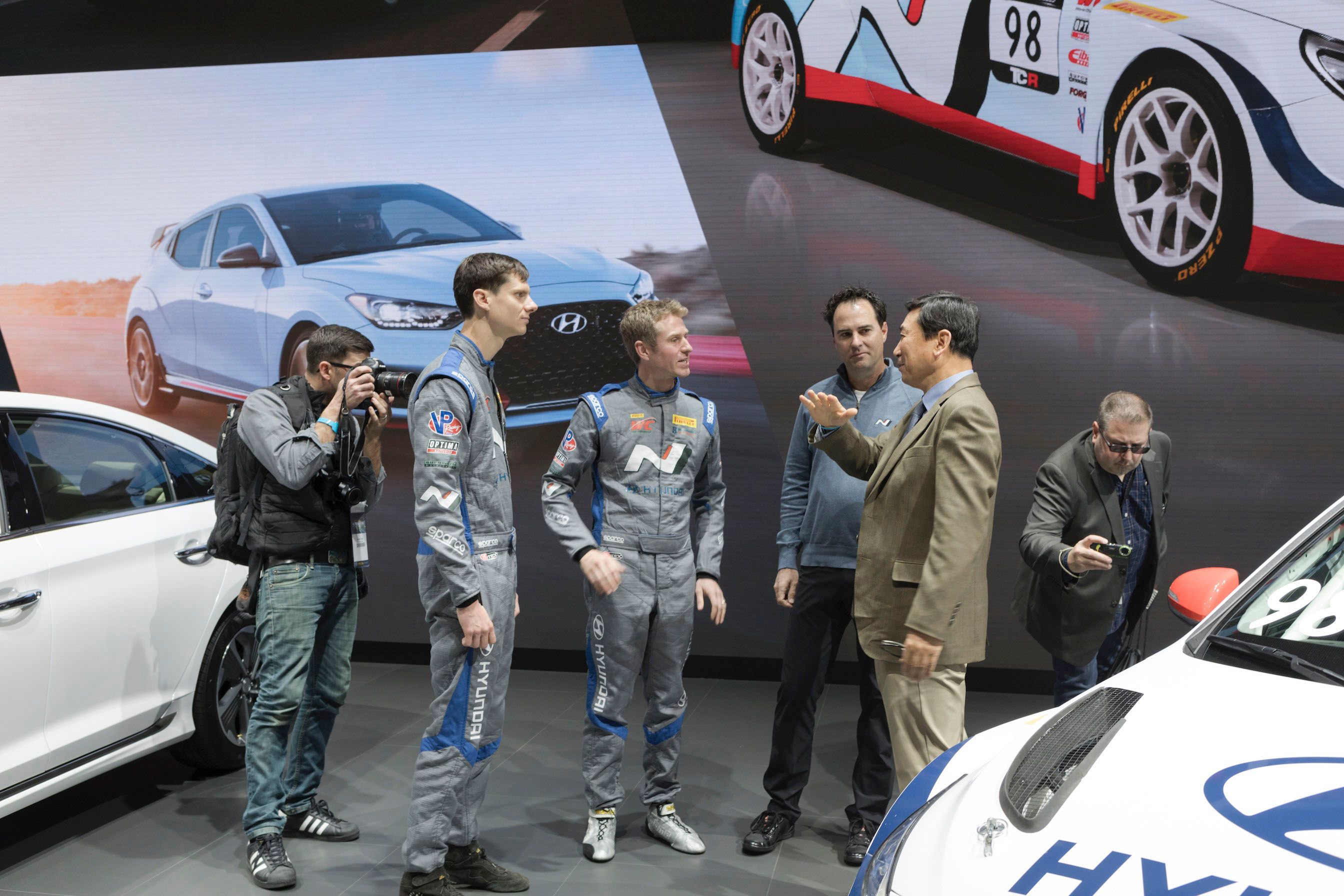
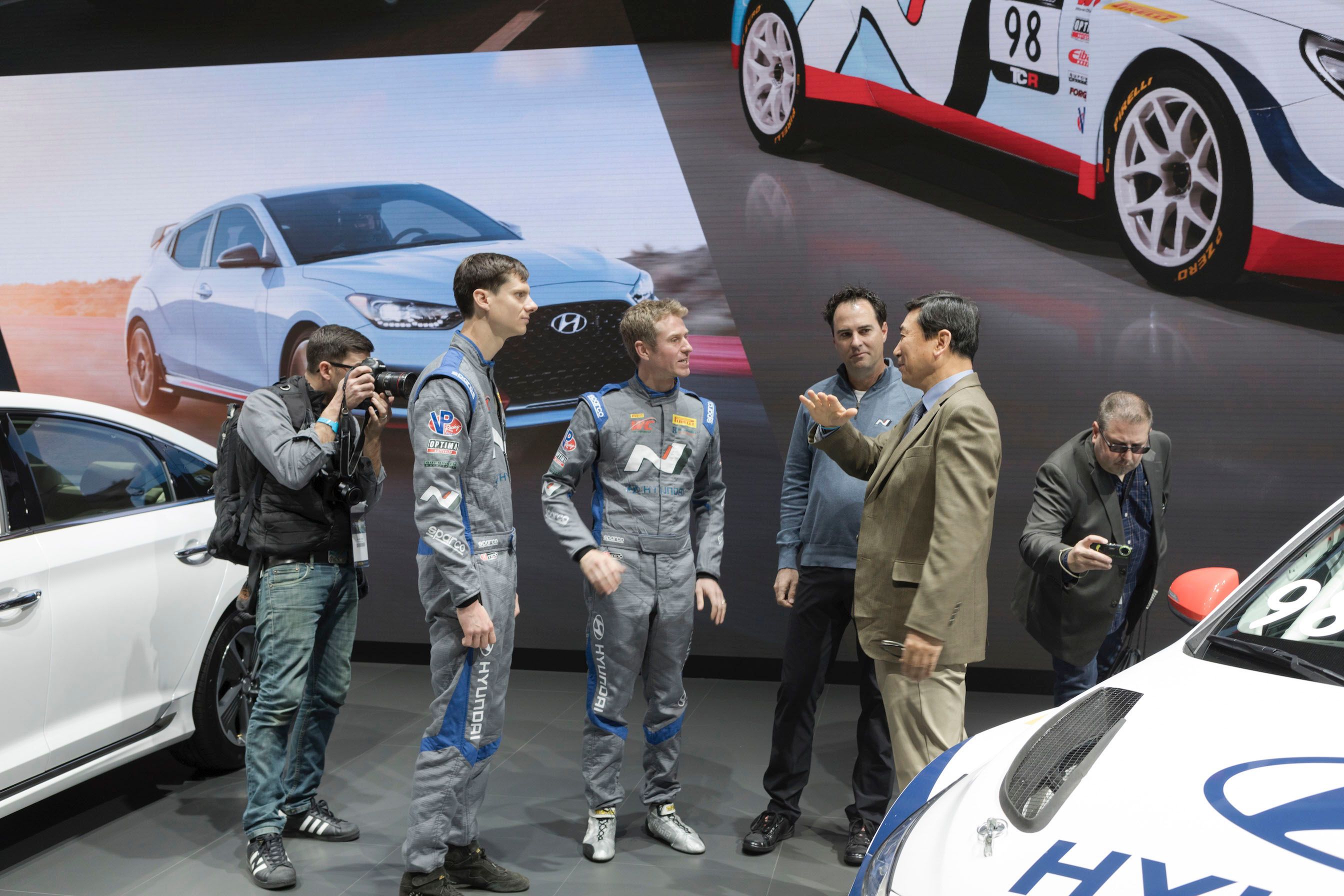
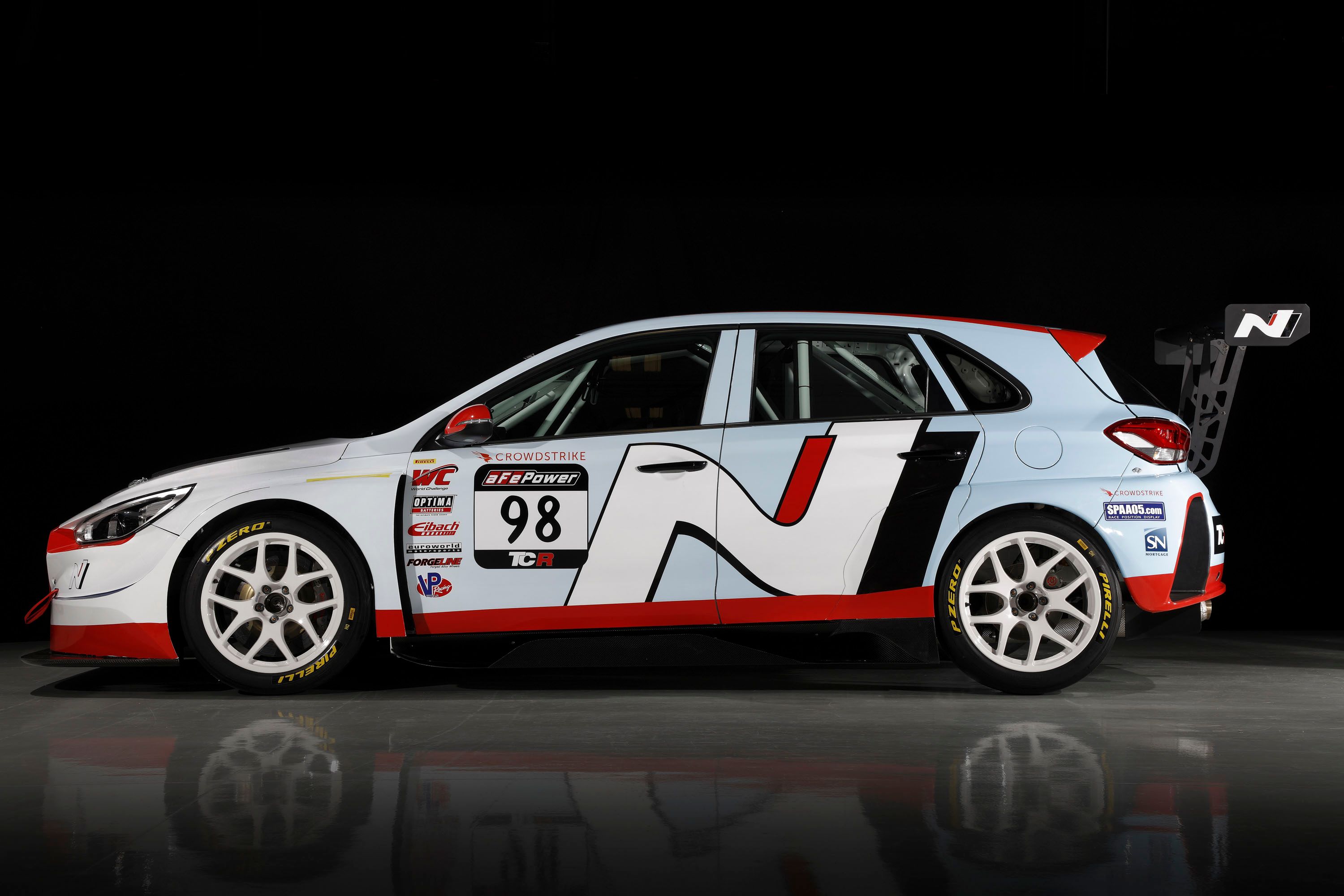
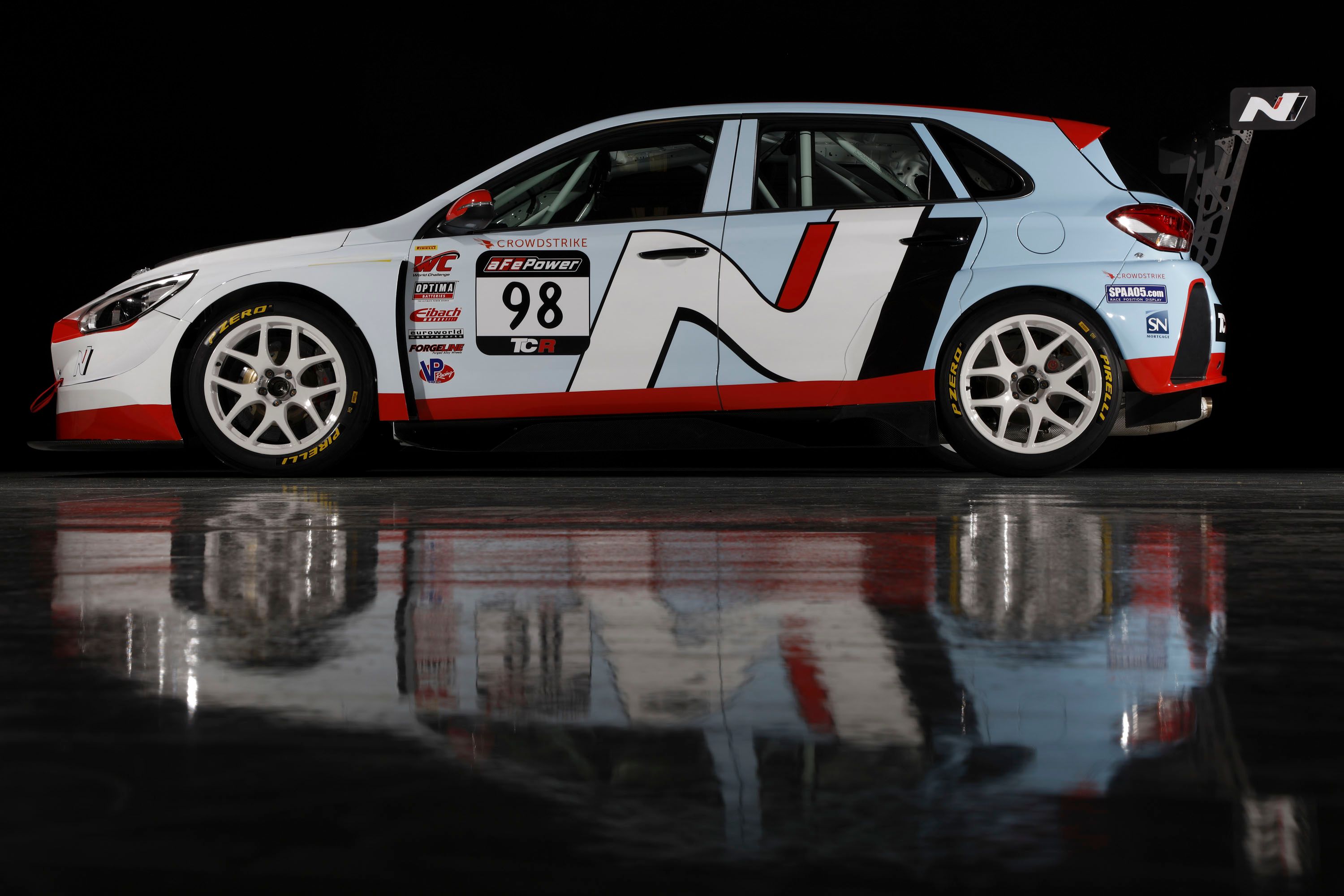
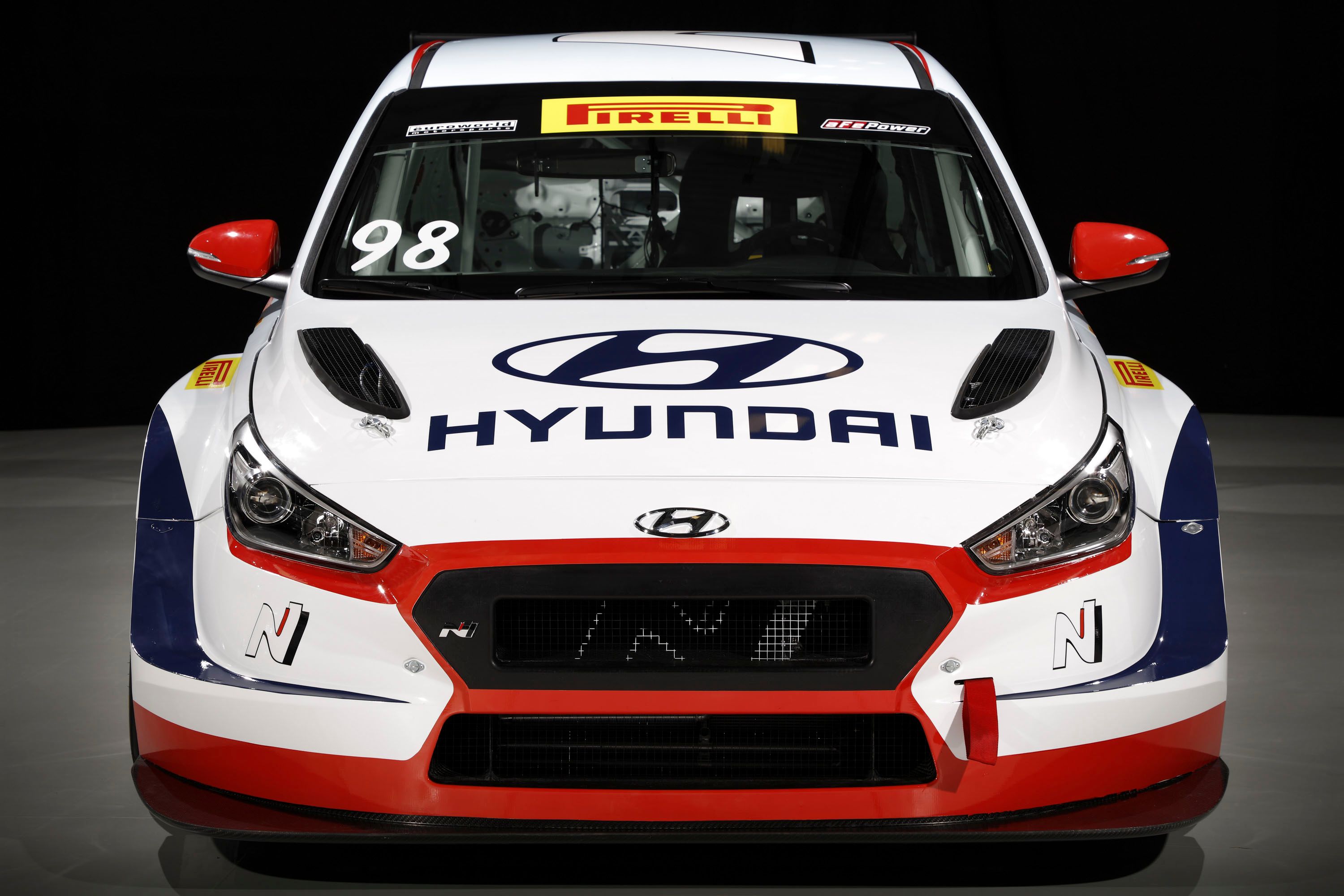
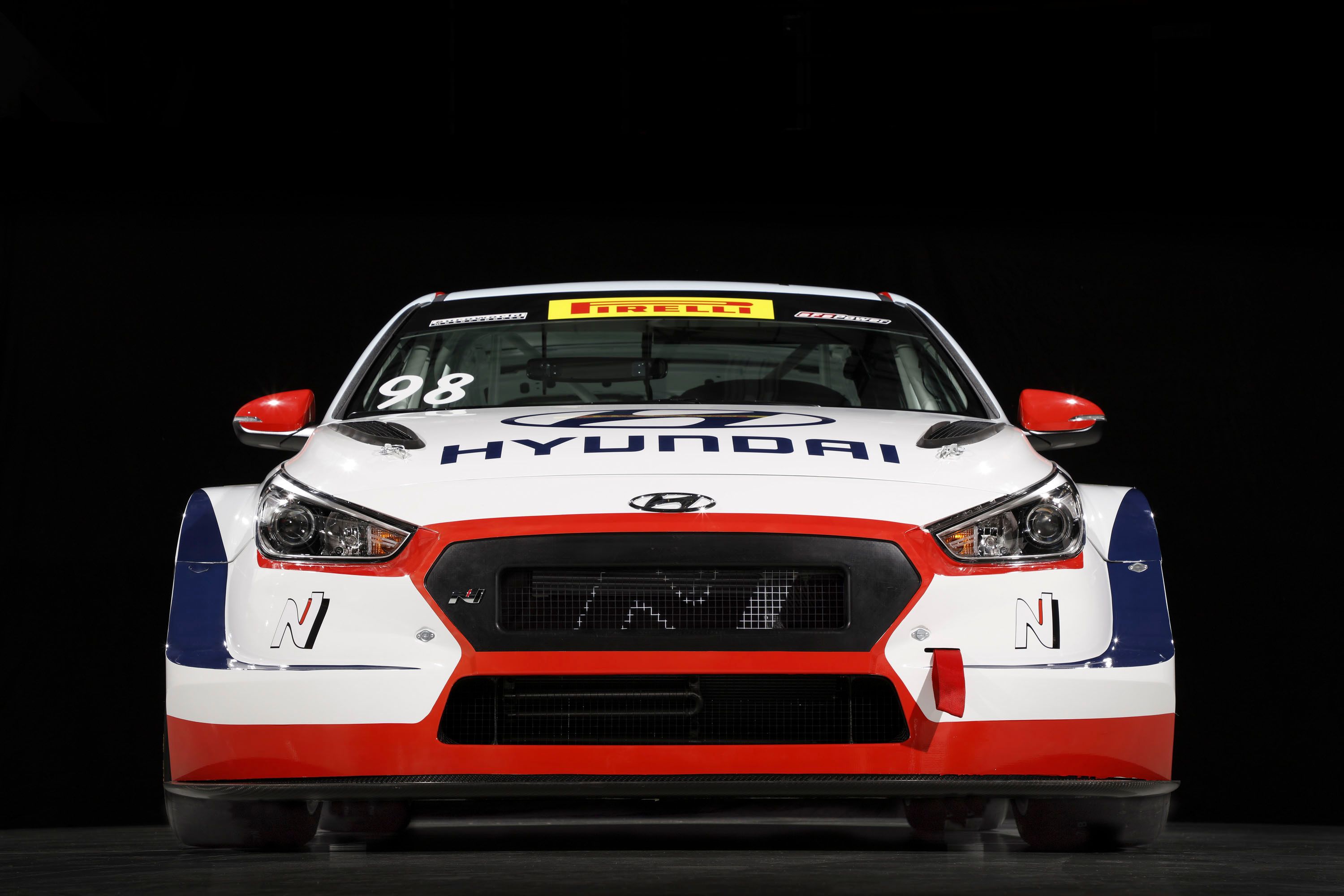
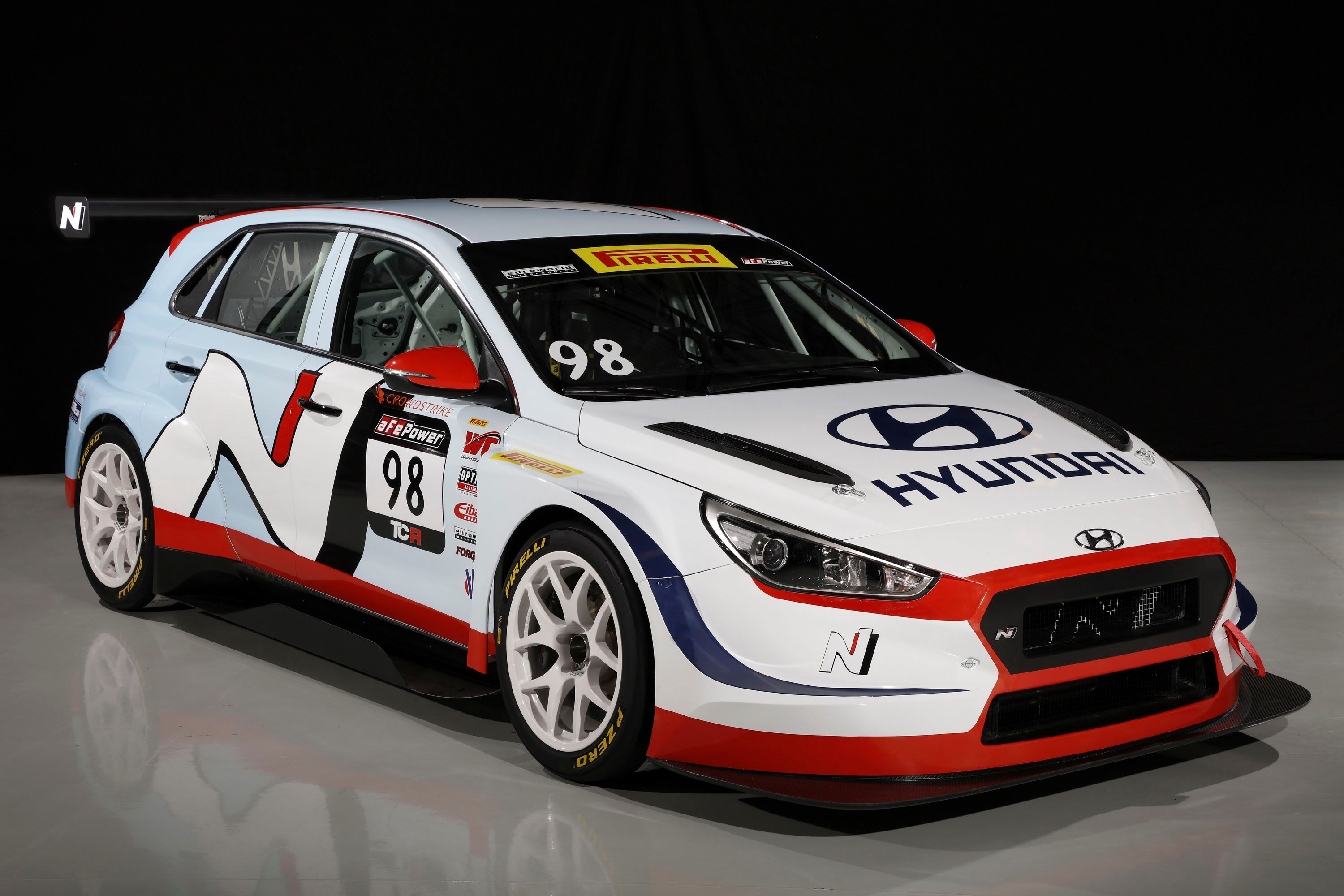
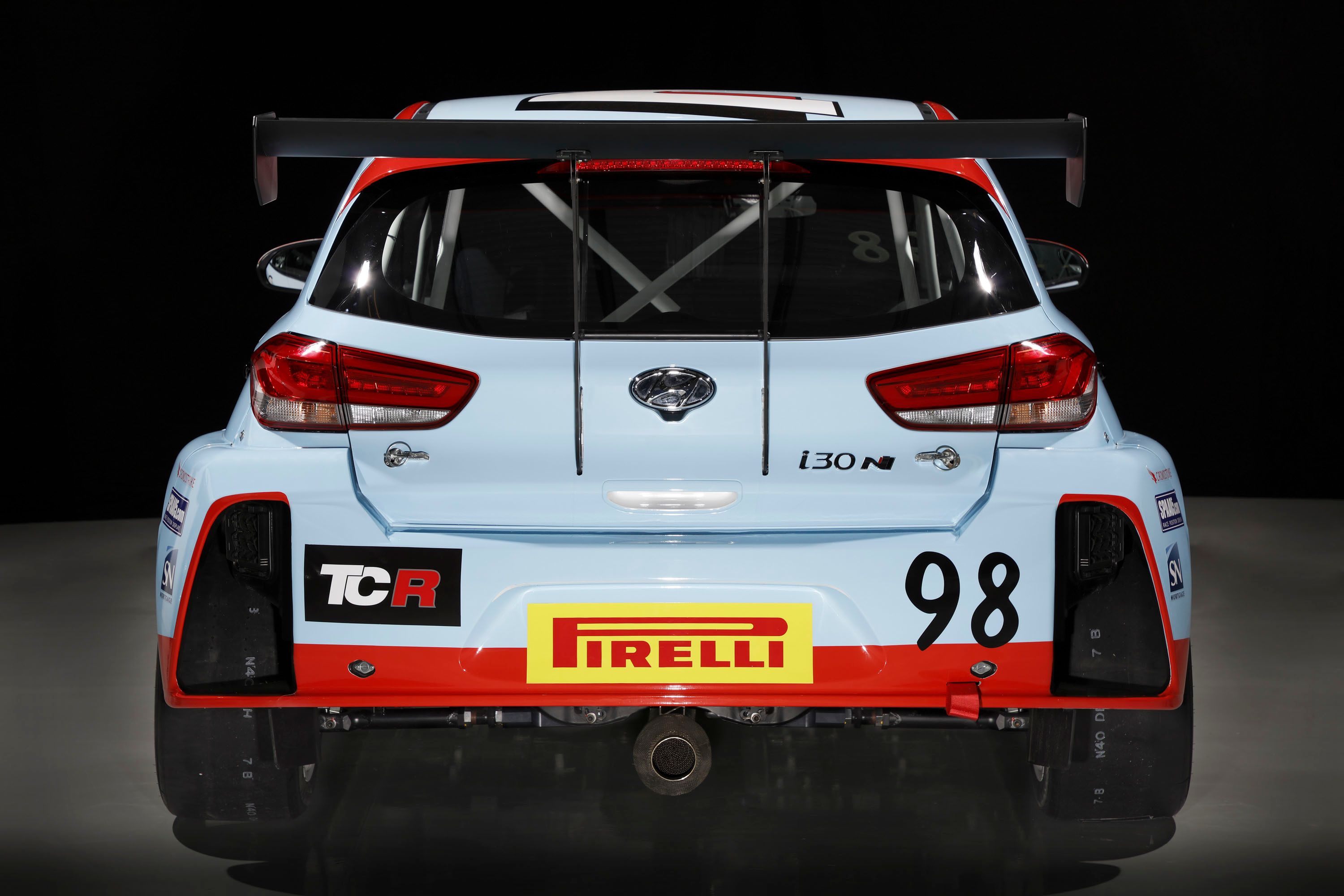
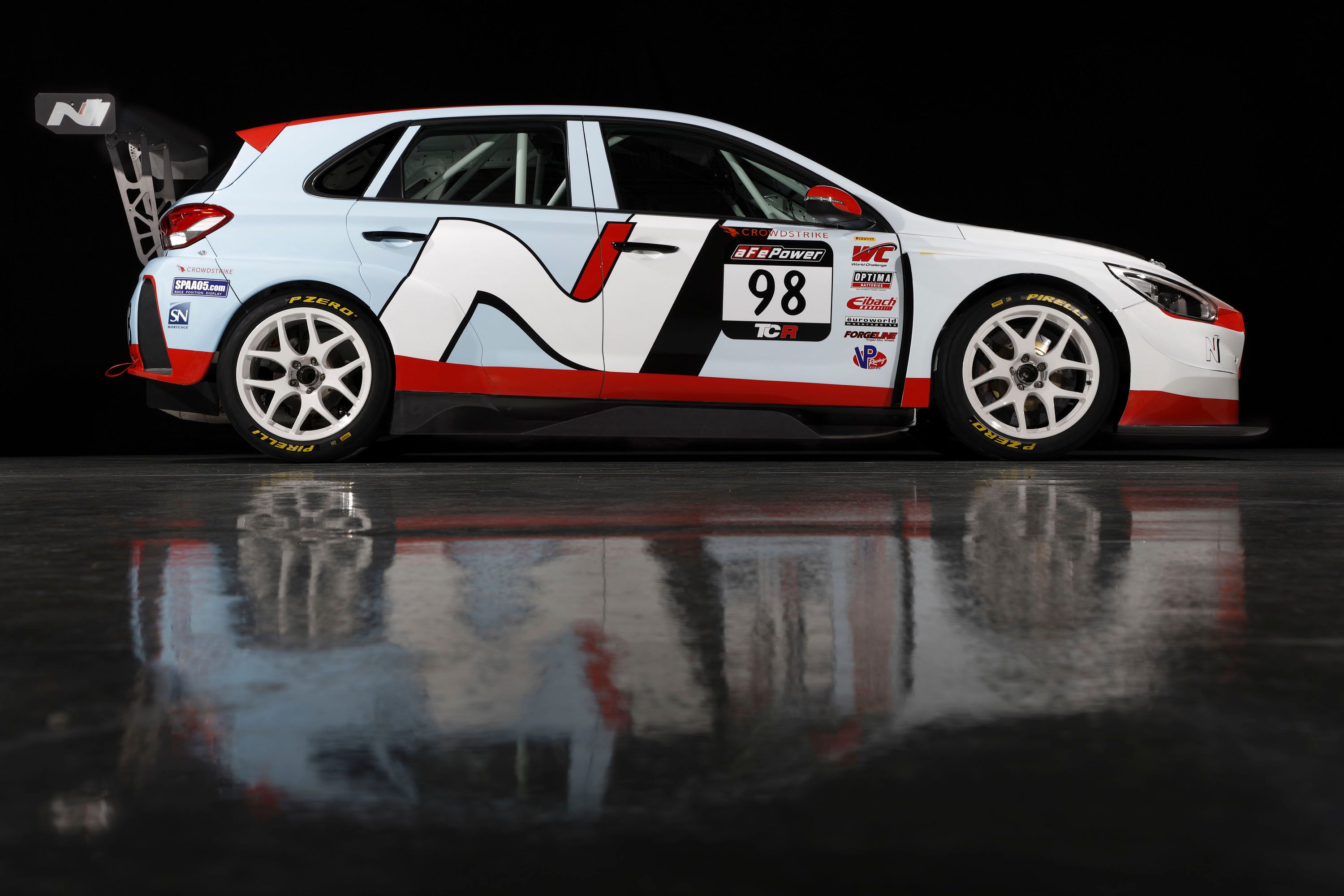
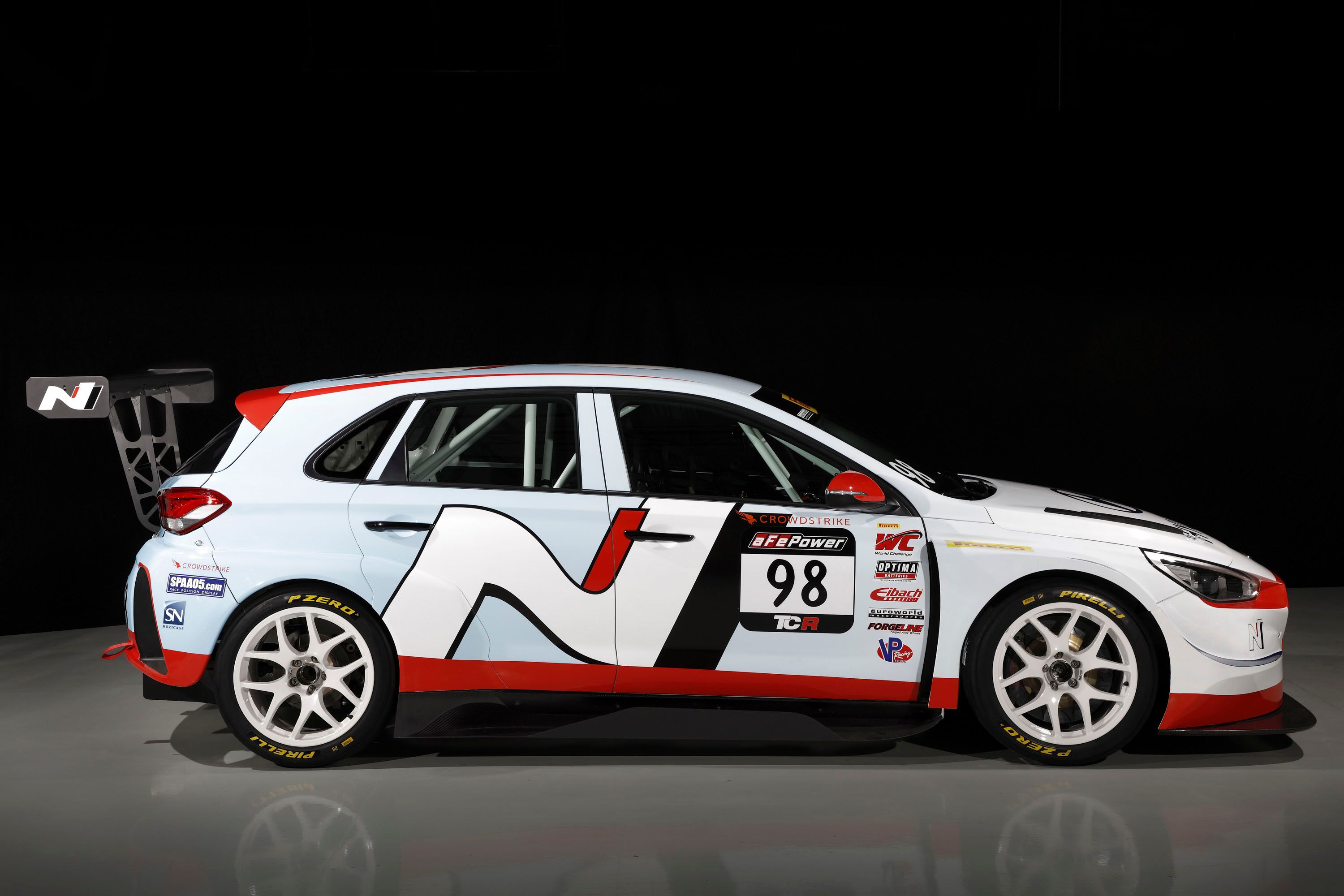
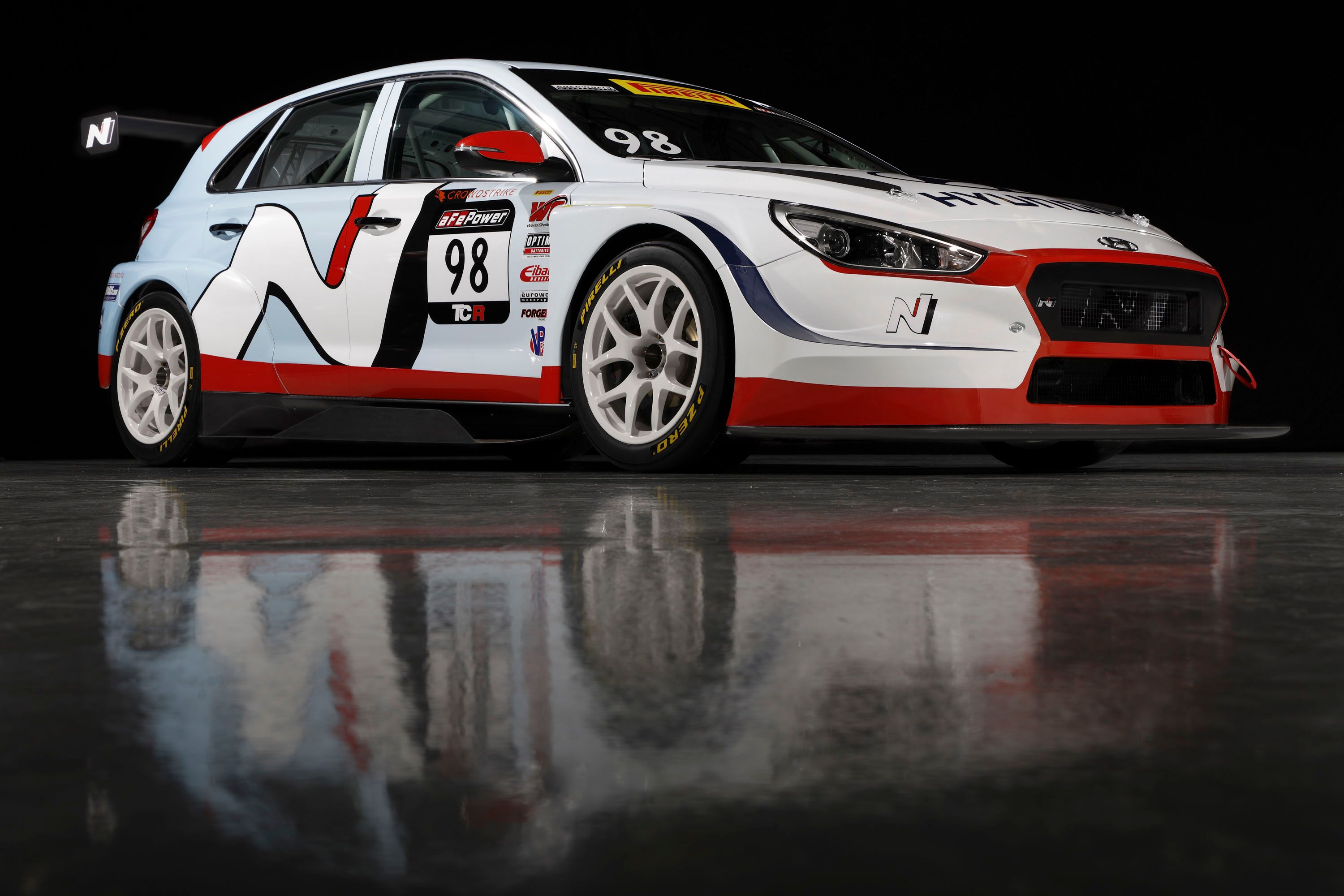
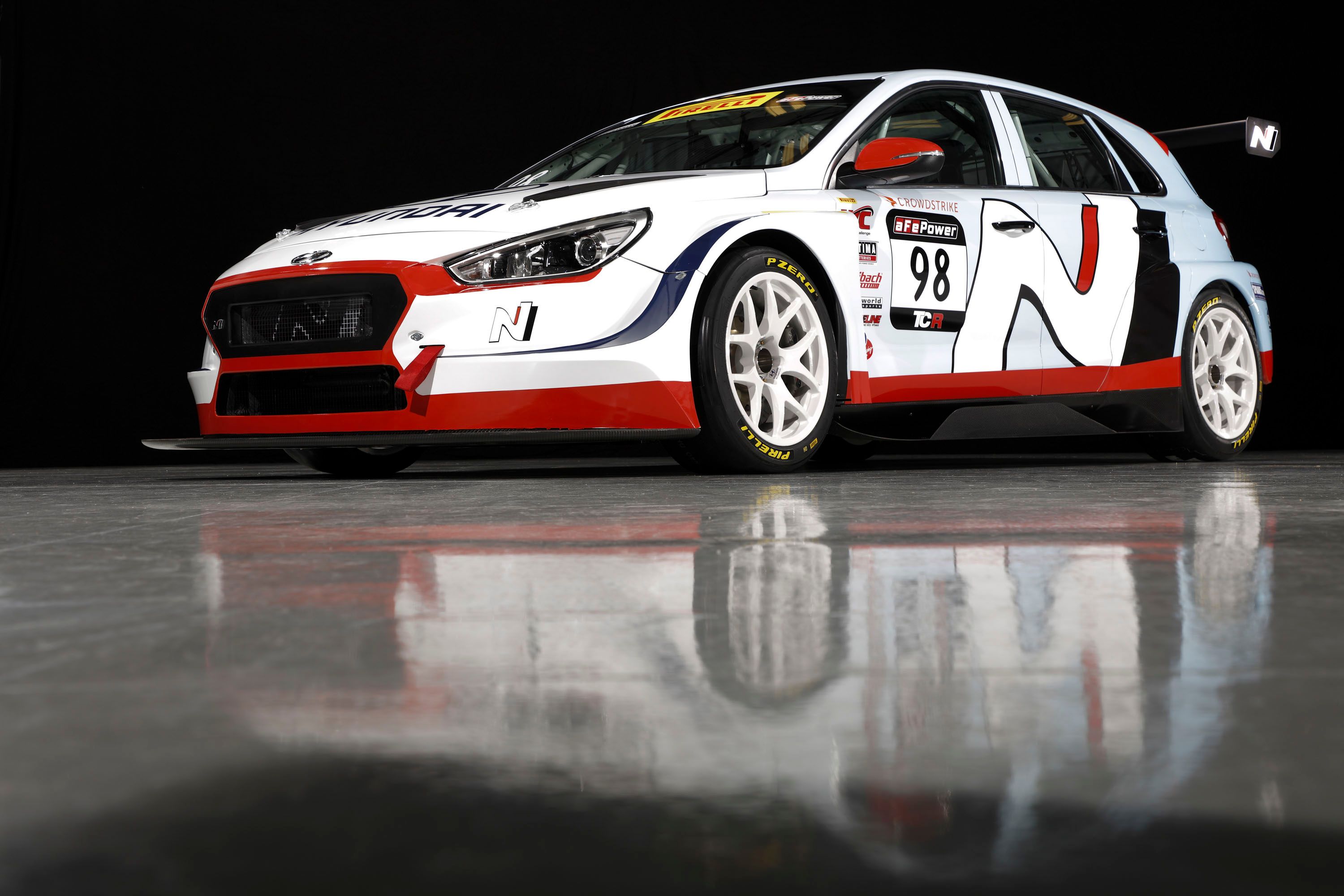
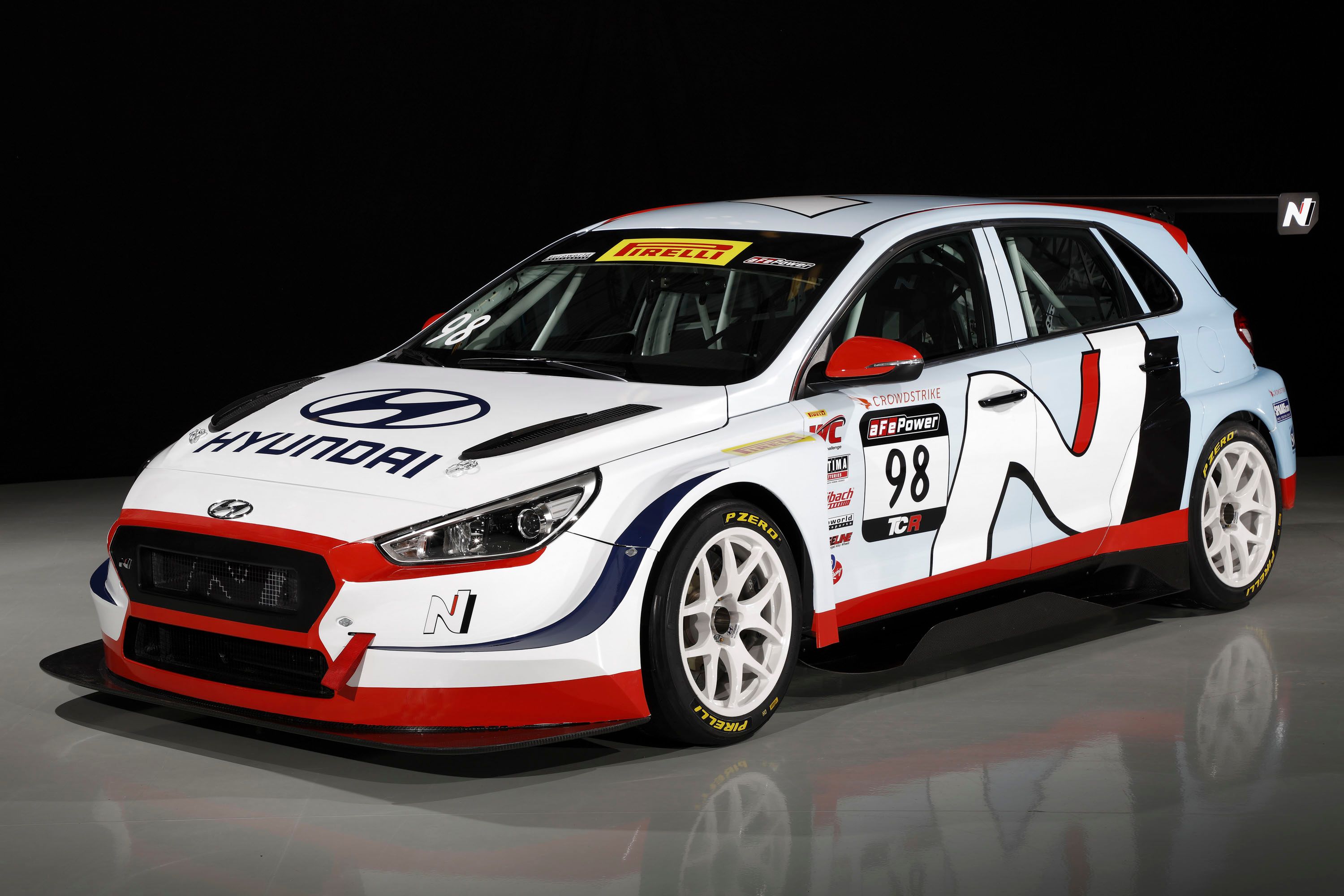
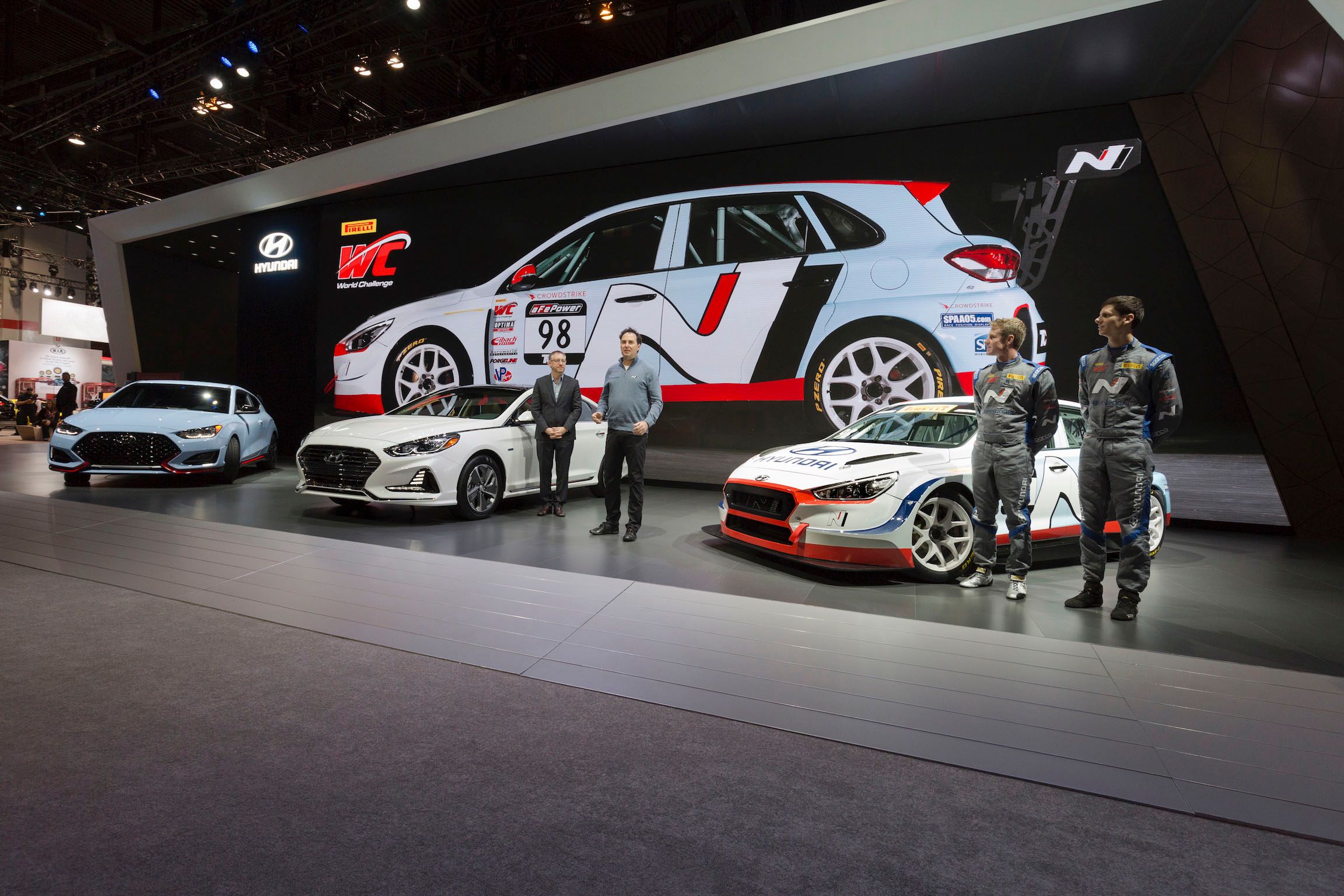
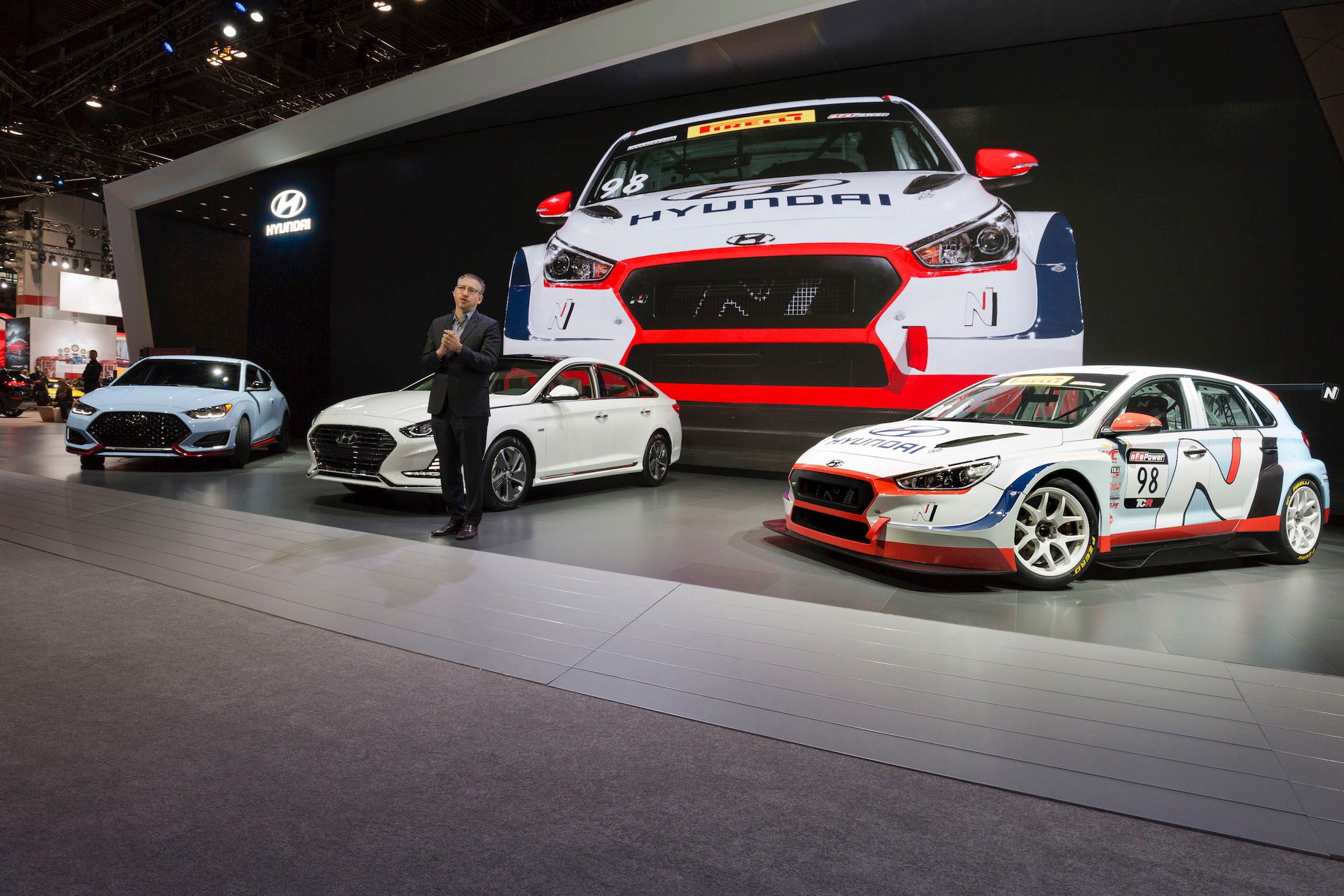
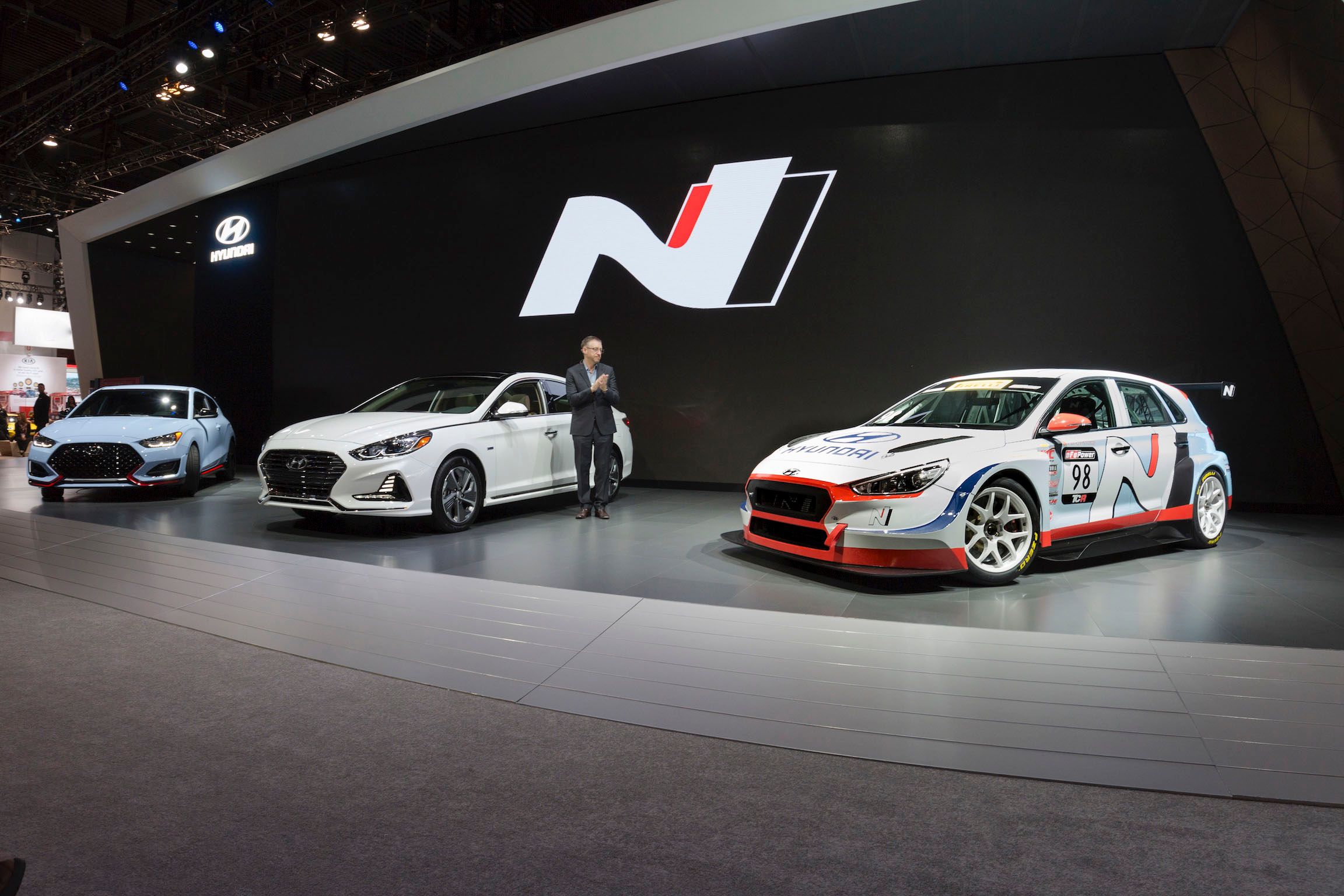
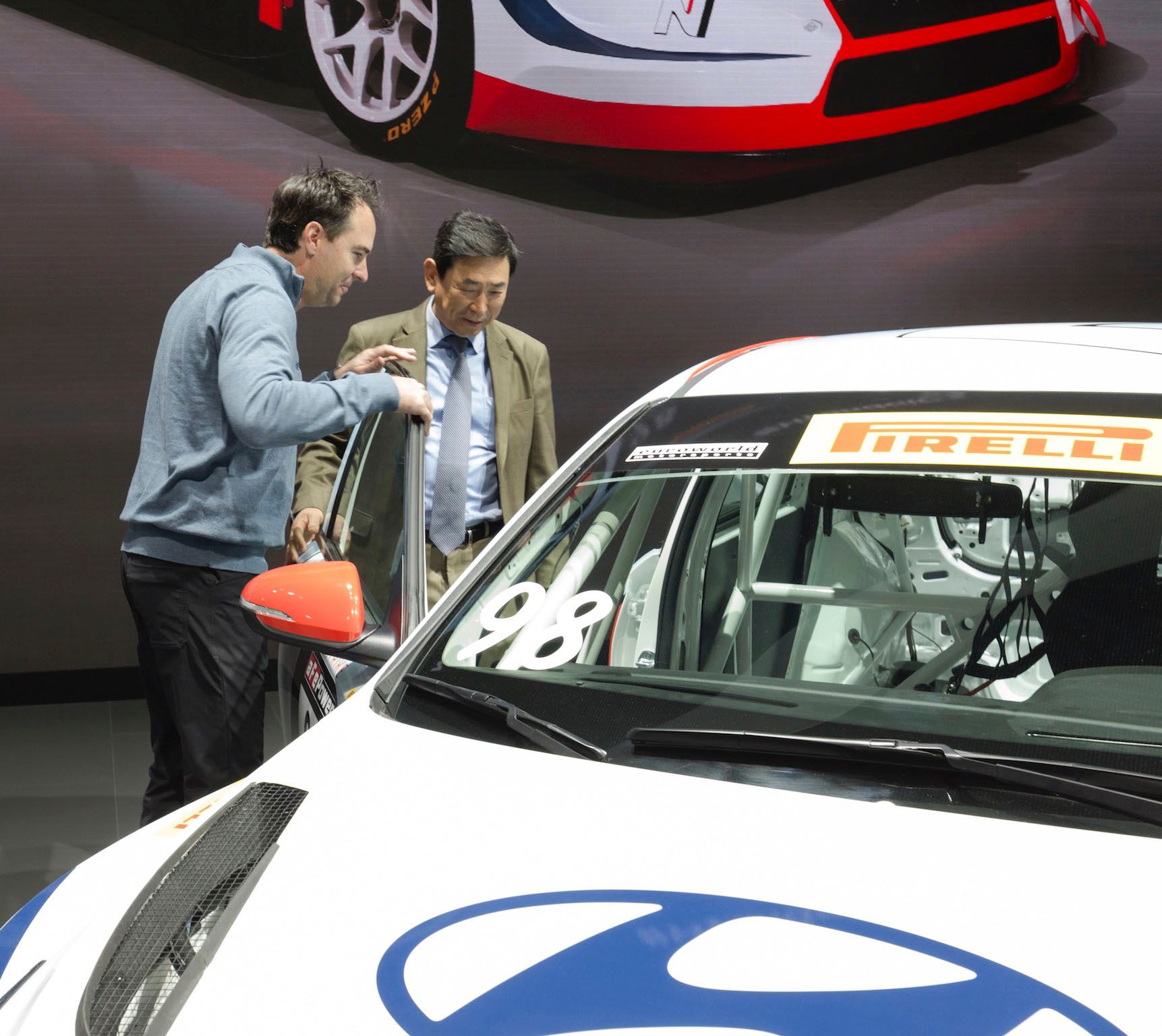
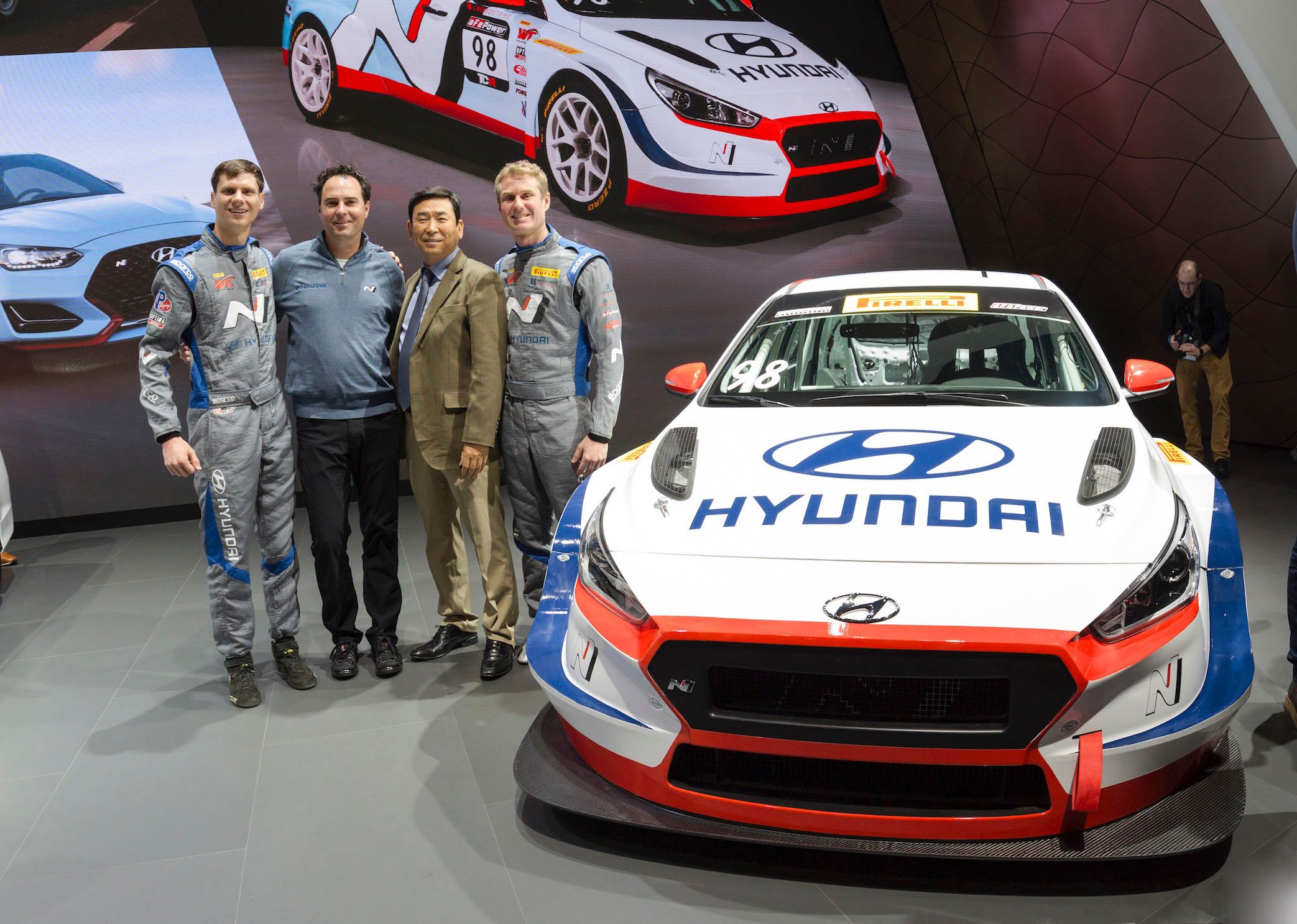
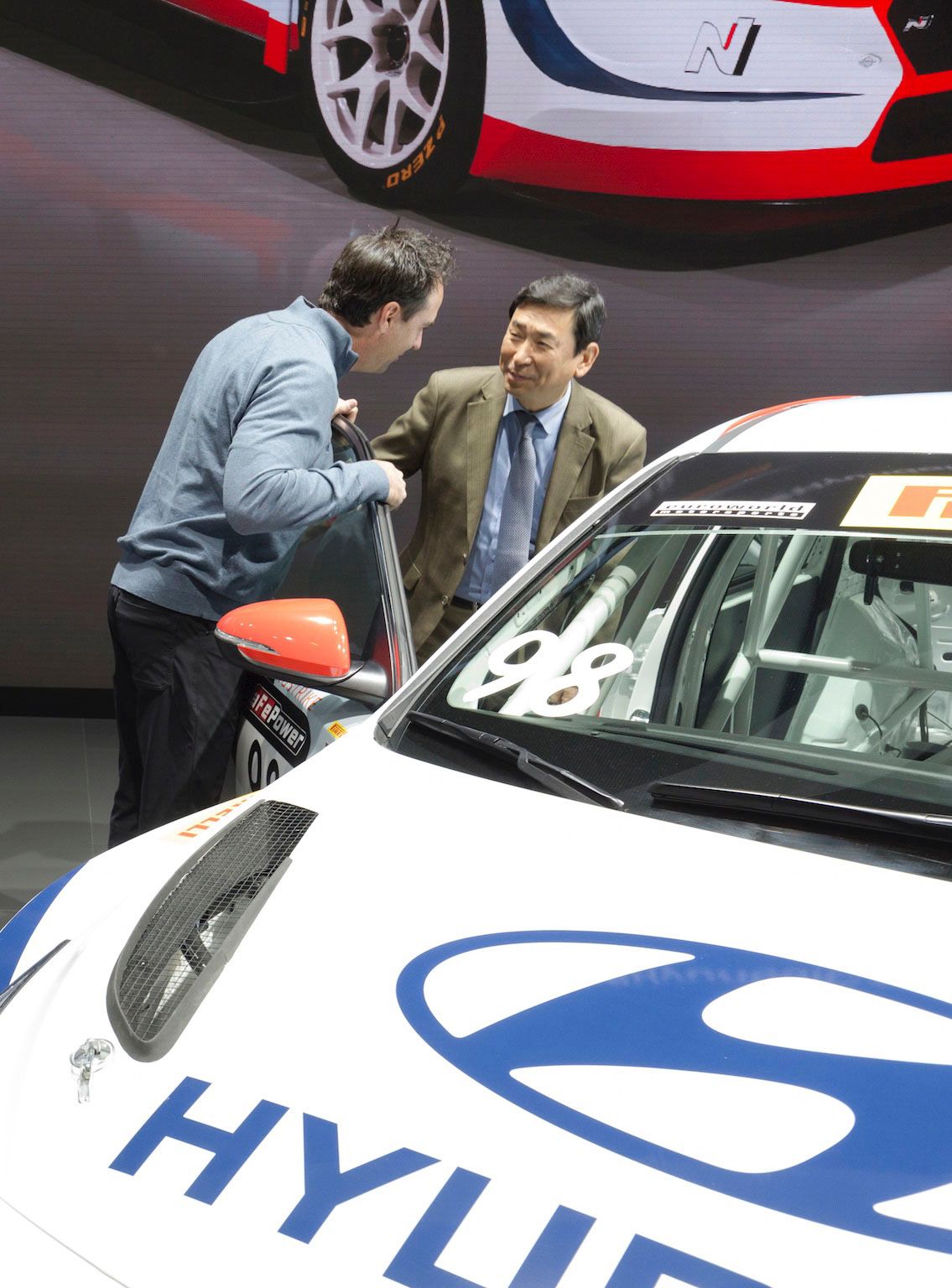
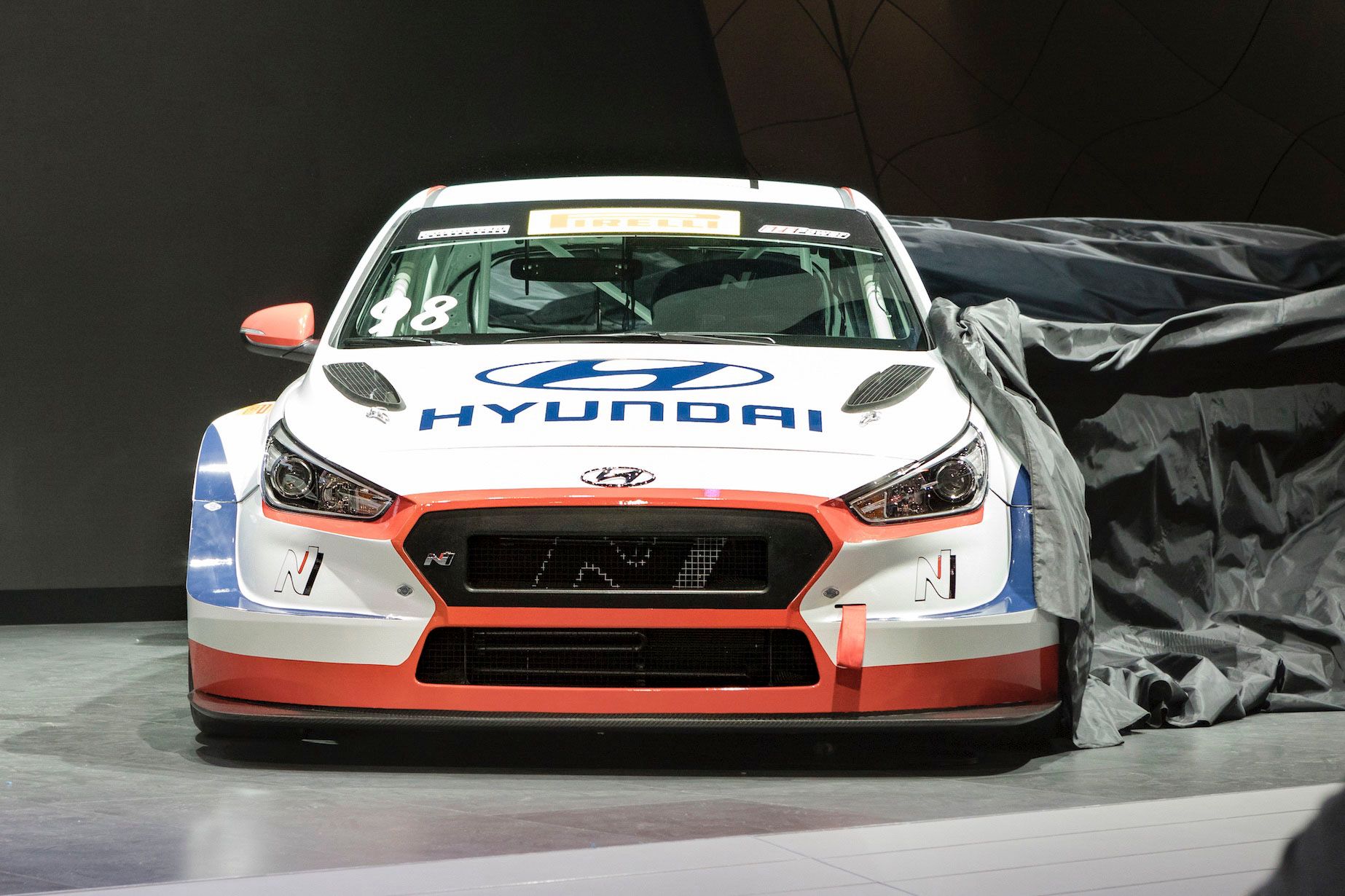
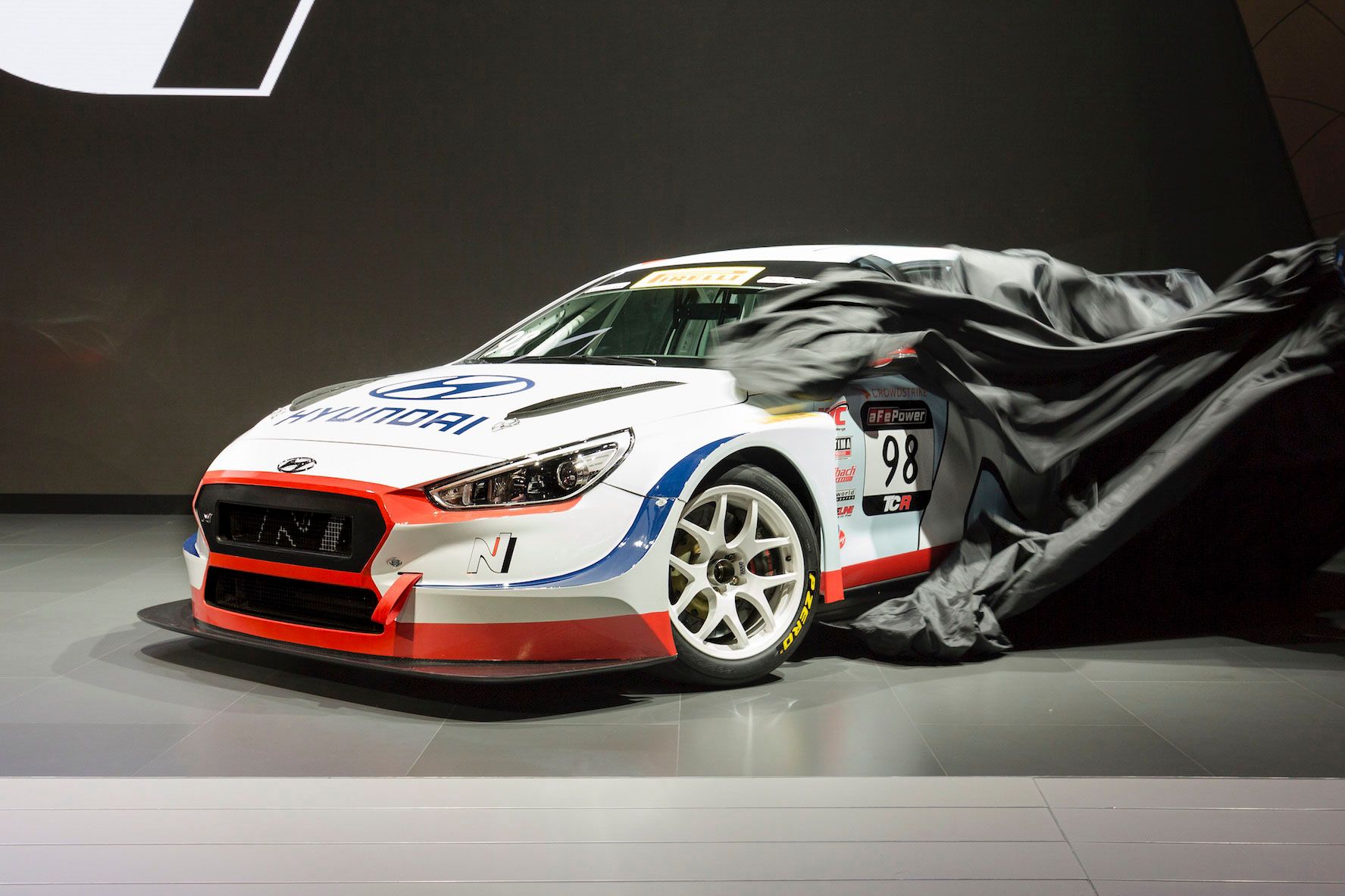
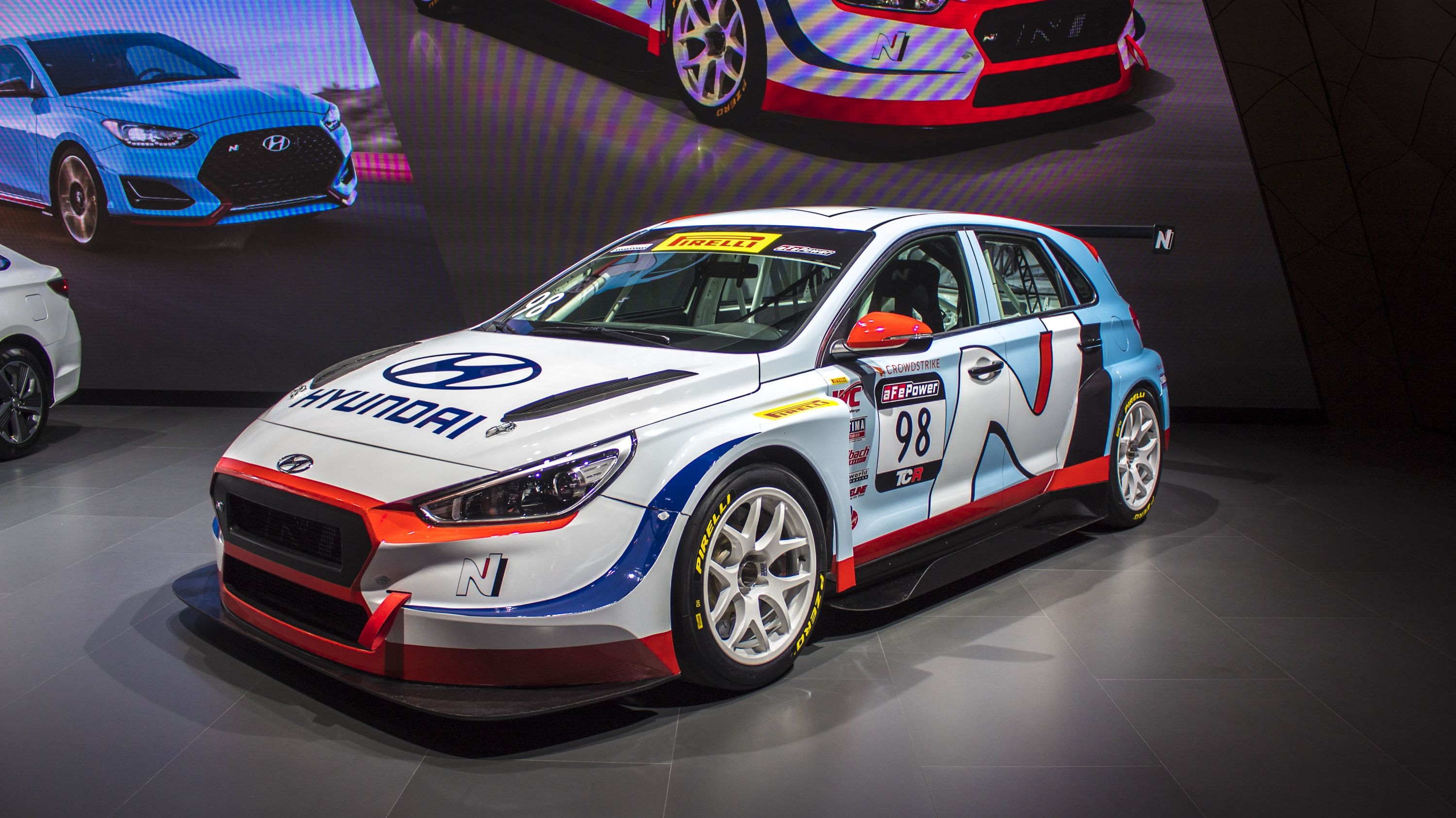
- Make: Array
- Model: 2018 Hyundai i30 N TCR
- [do not use] Vehicle Model: Array
What makes the Hyundai i30 N TCR special

Much like any race car based on a production model, the TCR is heavily based on the road-legal i30 N and remains highly recognizable. But while the shape, size, and most features are carried over, there are plenty of performance upgrades to talk about. Up front, there's a revised grille for improved cooling and a redesigned bumper. The latter ditched the usual side vents and gained a massive splitter below. The engine hood also carries extra vents on the sides, while the front bumper are significantly wider.
Onto the sides, the beefed-up front bumpers extend into aggressive, wide side skirts that give aerodynamics a new meaning. The rear fenders have also been widened, but in a different way compared to the usual race cars. While vehicle from the World Rally Championship have them wider on almost the entire surface, the ones on the i30 N TCR have been widened only around the wheel arch area. I'm sure Hyundai had a good reason to do this, but it looks a bit weird. The standard wheels have been replaced by TCR-spec 18-inch rims in Pirelli tires.

The rear also benefits from significantly changes. The bumper is completely new, now featuring massive intakes on each side, a simple layout in the middle, and big exhaust pipe below. The bumper also sits higher above the ground, making room for an intricate diffuser underneath. Finally, there's a massive wing, the kind you don't usually see on a hatchback. Because of the hatch configuration, the wing is mounted on the tailgate and the struts shaped as to keep the upper wing section in the right position. I'd definitely like to see a road-going version of this car!
Hyundai didn't allow us to get inside the race car at the Chicago Auto Show, but we did notice that it's according to the usual TCR specification. It retains a few of the standard model's features, but combined them with a big amount of motorsport elements. Highlights include Sabelt race-spec seats with six-point Hans harnesses, a Sabelt flat-bottomed steering wheel, a Lifeline fire extinguisher system, and an Odyssey lightweight battery.

The drivetrain is built around the same turbocharged, 2.0-liter four-cylinder engine form the road car, but the N division revised many internals to bring it to racing spec. Upgrades include a Life Racing ECU and data acquisition system and a BMC air induction kit. The unit is now rated at 350 horsepower, a 104-horsepower increase over the standard model. Or 79 horses compared to the i30 N equipped with the Performance Package.
The transmission is a pneumatic paddle-shift-operated six-speed sequential unit with external preload adjustment, a multi-disc clutch, and race-spec drive shafts. The chassis was also revised by Hyundai Motorsport and it's lighter and stronger than standard. The hatchback rides on front McPherson struts with adjustable dampers and rear four-arm, multi-link units and uses a hydraulic steering rack. Stopping power comes from 15-inch discs and six-piston Brembo calipers up front and 10.9-inch discs and two-piston calipers to the rear. The upgrade is rounded off by Pagid brake pads, adjustable pedal box with spherical bearing-mounted Brembo master cylinders, and Goodridge braided hoses and fittings.
All this car needs now is to hit the track and prove that it can handle the competition.
References
Hyundai i30
Read our full review on the 2018 Hyundai i30 N.
Read more Chicago Auto Show news.
Read more Hyundai news.

